Uptake of plug-in cars reached a record high in the UK with more than 115 electric cars registered every day during the first quarter of 2016.
Electric, Hybrid, Hydrogen Fuel Cell Car, News
Electric, Hybrid, Hydrogen Fuel Cell Car, News
Uptake of plug-in cars reached a record high in the UK with more than 115 electric cars registered every day during the first quarter of 2016.
Celebrity, 4x4, Crossover, Electric, Family Car, Hybrid, News, SUV
Hypercar, Electric, News, Supercars, Technology
Techrules plans to launch China’s first supercar – featuring its TREV technology – in the next two-to-three years.
Electric, Hatchback, News, Technology
Electric, Hybrid, Motorshow, News, Hatchback






Offering improvements in its EV performance, in terms of driving range, power and maximum speed, the new model builds on the strengths of the latest generation Prius, introduced earlier this year.
The new Prius Plug-in’s Hybrid Synergy Drive powertrain features a larger, 8.8kW/h lithium-ion battery pack, increasing its driving range in EV mode as well as the potential driving range from a tank of fuel. Fuel consumption shows a marked improvement compared to its predecessor, with an estimated average figure of 202mpg, the best rating for any current plug-in hybrid on the market, says Toyota, producing a CO2 figure of just 32g/km.
Even when not running in EV mode, the Prius Plug-in will automatically favour its all-electric drive capability in situations where this can deliver higher efficiency than the petrol engine, most notably when driving around town and on shorter journeys.
The new plug-in hybrid system further minimises use of the petrol engine, even when accelerating quickly or using the cabin heater, with the adoption of a new battery-powered heating system that improves efficiency in cold weather, and the world’s first heat pump air conditioning system with gas injection.
As a result of these advanced technologies, the new car can be driven at speeds up to 84mph while still in EV mode. The potential EV driving range is more than 30 miles, around twice that of its predecessor, and charging the battery should take around two hours and 20 minutes.
The hybrid system’s 1.8-litre Atkinson cycle VVT-i engine also plays an important role in its overall efficiency. Its large-volume exhaust gas recirculation system, improved combustion efficiency and innovative measures to manage heat and reduce friction have improved its thermal efficiency to 40 per cent, a world-best figure for a mass-produced petrol engine.
The Prius styling presents a ‘chiselled profile and edgy character lines’ according to Toyota, and has a more ‘road-hugging’ look and a lower centre of gravity. Compared to the current model, it is 165mm longer, 15mm wider and sits 20mm lower to ground.
The car’s 0.24 drag coefficient (Cd) is expected to be among the lowest of any production saloon, achieved with a number of advanced design features such as the “double bubble” tailgate glass and a grille shutter which automatically closes when airflow is not needed to cool the radiator.
Weight has been kept to a minimum through extensive use of high-tensile steel in the bodyshell, aluminium for the bonnet and, in a first for a mass-produced car, a carbon fibre reinforced plastic (CFRP) tailgate. Its status as an individual model within the Prius range is confirmed by a unique lighting signature, created with four-lamp LED projector headlights and LED tail lamps.
The interior features a four-seat layout, built around a full-length centre console. The instrument cluster has dual 4.2-inch full colour TFT screens while the centre cluster has a floating design and an eight-inch touchscreen for easy operation of audio and navigation functions, including flick actions to scroll through the different displays.
A sound-insulating laminated windscreen and front door glazing creates, says Toyota, an ‘exceptionally quiet’ cabin environment, aided and abetted by a quieter S-Flow automatic air conditioning system which has been made smaller and lighter and uses less power.
The Prius Plug-in will be offered with Toyota Safety Sense, equipping it with integrated active safety and driver assistance functions including a Pre-Collision System with Pedestrian Detection and Autonomous Emergency Braking; Lane Departure Alert with Steering Assist; Full-Speed Adaptive Cruise Control with full stop technology; and Automatic High Beam headlight operation. A Blind Spot Monitor and Rear Cross Traffic Alert will also be available.
The new Prius Plug-in will be available in UK showrooms from the end of this year.
Family Car, Hydrogen Fuel Cell Car, Electric, Events, News, SUV
Working together, the partners of the government-backed LHNE project have broken the record for the longest journey in the UK on a single tank of hydrogen, travelling 400 miles - and have also broken the longest continuous journey for an FCEV by travelling 6,096 miles over the course of six days.
The record was broken in the ix35 Fuel Cell car as part of the LHNE partners’ contribution to Hydrogen Week (March 11-18), designed to raise awareness of the significant benefits offered by FCEVs and their environmentally-friendly credentials.
The group of companies that comprise the project, which is led by Air Products, completed around 50 of laps of the M25 motorway, plus mileage to and from one of the four publicly-accessible hydrogen refuelling stations in the UK.
Hydrogen FCEVs produce no harmful tailpipe emissions with water being the only by-product. With range and refuelling times similar to those of petrol or diesel cars, they can be seen as direct replacements for conventional vehicles.
LHNE, co-funded by Innovate UK, was set up in 2012 to create the UK’s first hydrogen-powered transport system across London and the South East. It has delivered a new publicly-accessible, state-of-the-art fast-fill SmartFuel hydrogen refuelling station and upgraded a second to 700 bar pressure status.
The LHNE partners are now keen for the adoption of a range of hydrogen vehicle technologies, including fuel cells, to accelerate in the UK but one of the main challenges is the limited coverage of refuelling stations to support the vehicles. There are currently four publicly-accessible stations in the UK, including the two Air Products SmartFuel stations in London, and funding is in place for at least 12 to be operational in England and Scotland within the next 12 months.
Diana Raine, European Business Manager Hydrogen Energy Systems at Air Products, which has led the LHNE project, said: “It is fantastic to have overhauled the two records we aimed to beat this week. The fact that we have managed to drive 6,096 miles in under a week demonstrates perfectly the viability and usability of FCEVs. What we need now for accelerated adoption of hydrogen vehicles is for the Government to work with our industry to provide the right framework for the technology to become truly accepted by the public.”
Prices for the Hyundai ix35 Fuel Cell vehicle start from £53,105 OTR with part-funding from the HyFive project - saving customers nearly £15,000 off the un-funded on-the-road-price of £67,985.
Electric, Motorshow, News, Technology
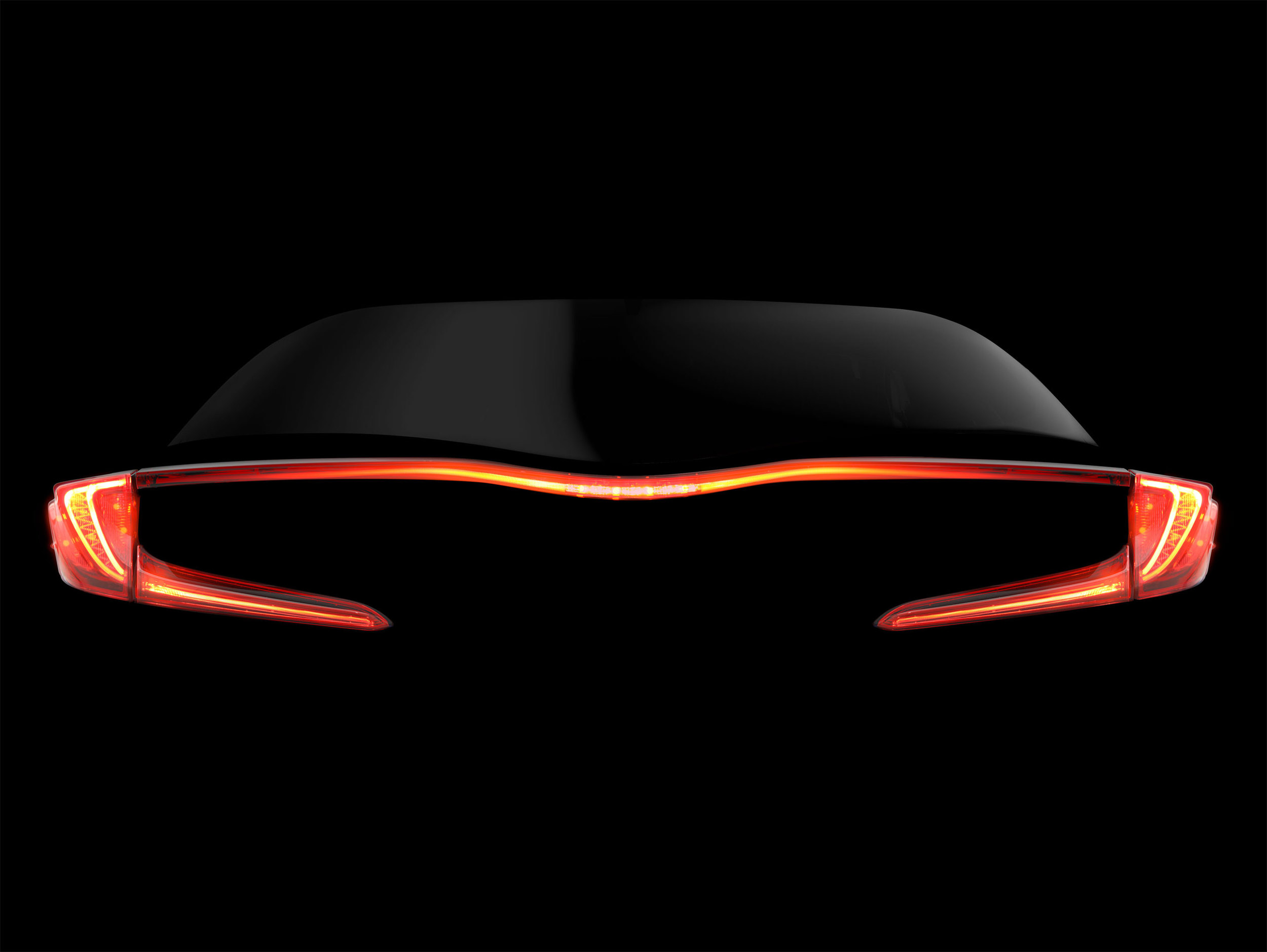
Toyota has released a teaser image of its new Prius.
Set to debut at the New York Auto Show this March, Toyota is giving very little away although it is clear the new Prius model will feature a new tail-light design. The updated horizontal rear lights seemingly replace the more vertical lights seen on the current model.
Toyota has also confirmed its display will also include ‘stand-out style’ as well as eco-technology. Toyota will roll out the next development in its new Prius line-up at 09:10 local time, 13:10 UK time, on 23 March.
The New York Motor Show runs from March 25 - April 3.
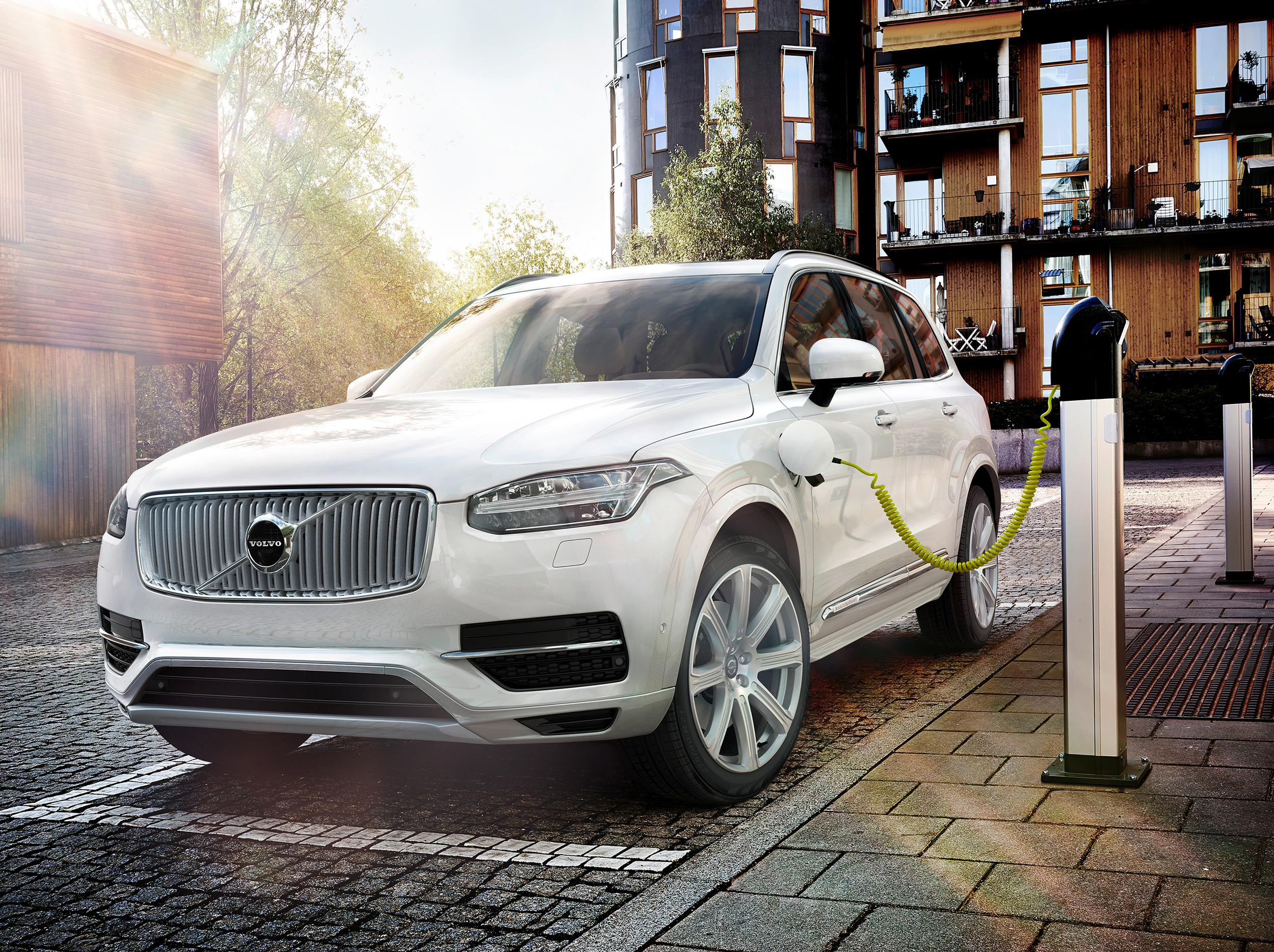
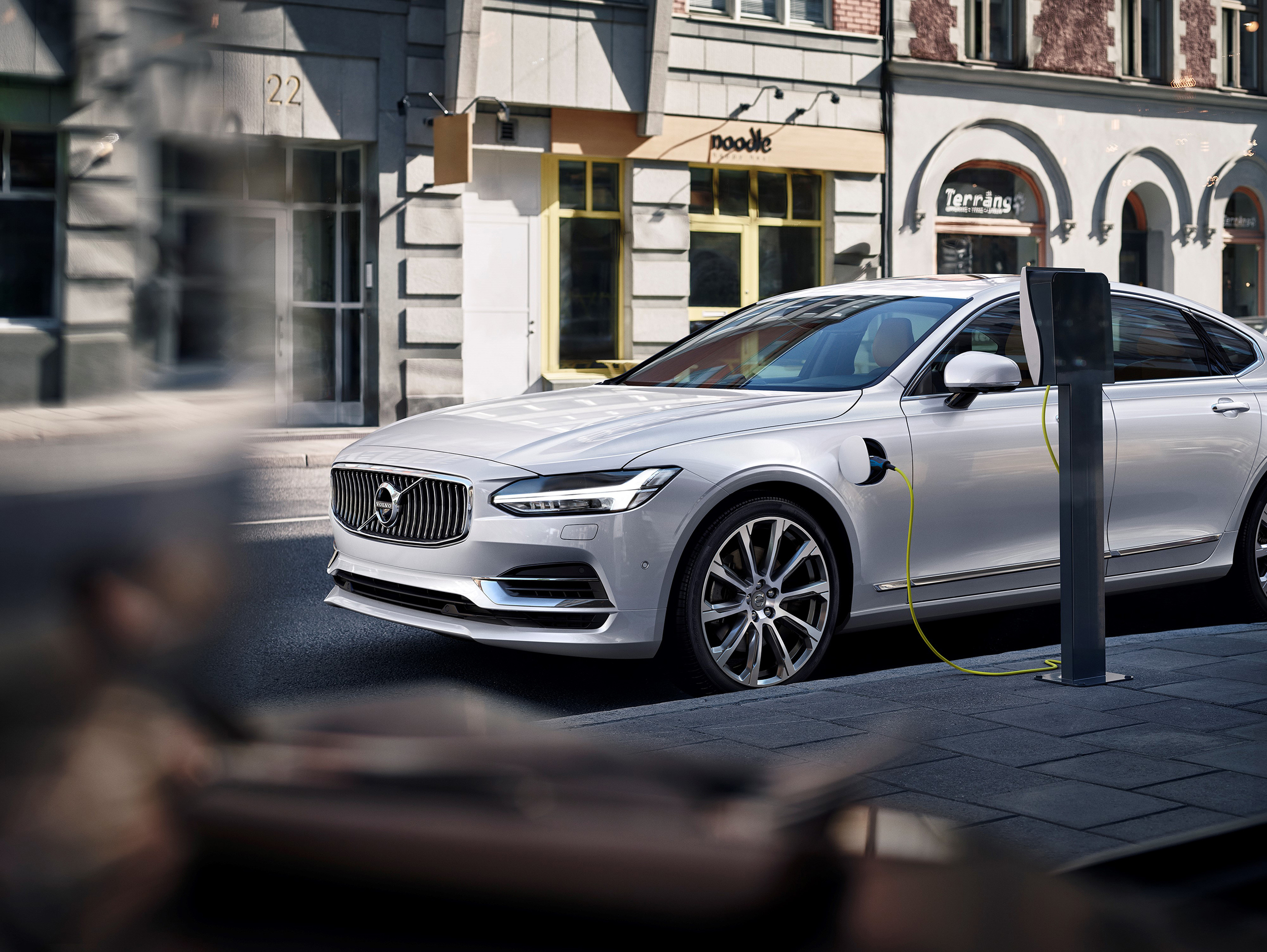
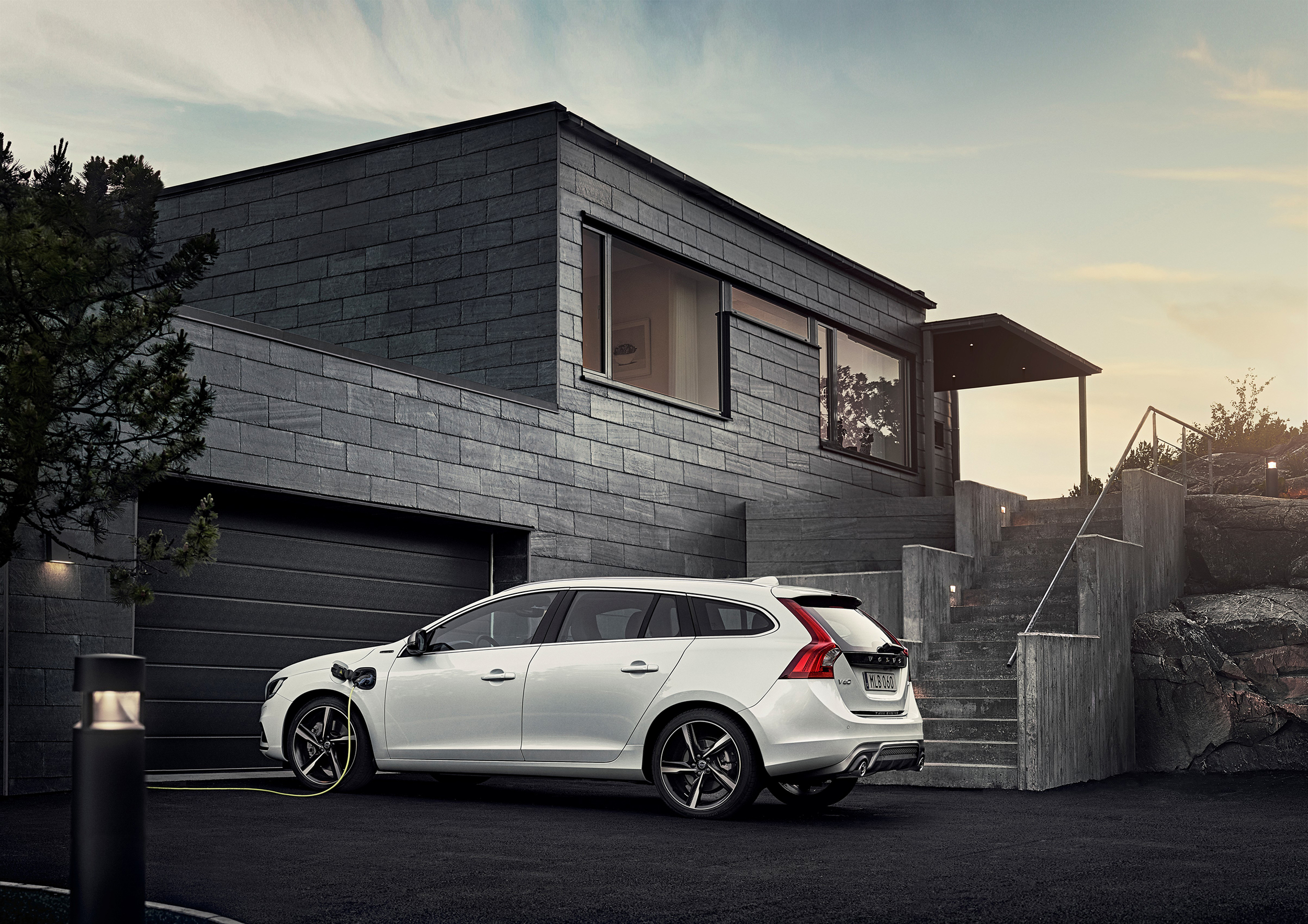
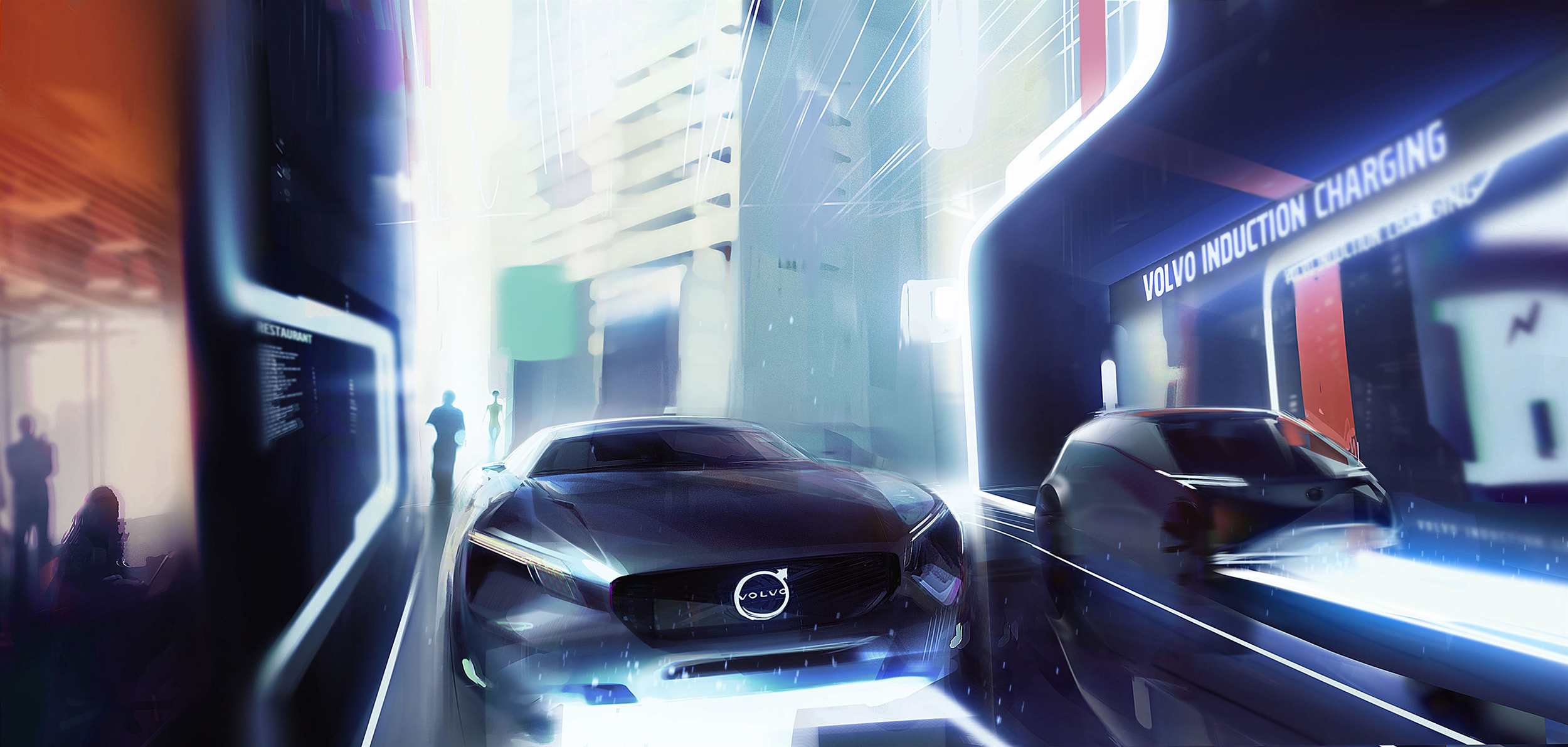
Volvo has confirmed its supports for the Charging Interface Initiative - a global drive towards a recognised standard for electric car charging.
The Charging Interface Initiative is a consortium of stakeholders that was founded to establish their Combined Charging System (CCS) as the standard for charging battery-powered vehicles.
The Combined Charging System, which will offer both regular and fast-charging capabilities, makes electric car ownership increasingly practical and convenient – especially in urban environments, which are ideal for electric vehicles. It combines single-phase with rapid three-phase charging, using alternating current at a maximum of 43 kilowatts (kW), as well as direct-current charging at a maximum of 200 kW and the future possibility of up to 350 kW – all in a single system.
Volvo is one of the leading makers of plug-in hybrid cars and will offer a plug-in hybrid variant of every new model as it replaces its entire product portfolio in the coming years. It will introduce a fully electric vehicle by 2019, based on its modular SPA vehicle architecture.
In order to cement the increasing popularity of electric vehicles and ensure that customers fully embrace the technology, Dr Mertens, Volvo’s Senior Vice President for Research & Development said: “We see that a shift towards fully electric cars is already underway, as battery technology improves, costs fall and charging infrastructure is put in place,” said Dr Mertens. “But while we are ready from a technology perspective, the charging infrastructure is not quite there yet. To really make range anxiety a thing of the past, a globally standardised charging system is sorely needed.”
The Charging Interface Initiative is currently in the process of drawing up requirements for the evolution of charging-related standards and certification for use by car makers around the globe.
“We are very happy to support and be involved in the setting of standards for electric vehicle charging systems. The lack of such a standard is one of the main obstacles for growing electric vehicles’ share of the market,” said Dr Mertens.
One in five of all Volvo XC90s sold is a T8 Twin Engine plug-in hybrid.
City Car, Electric, Hybrid, News

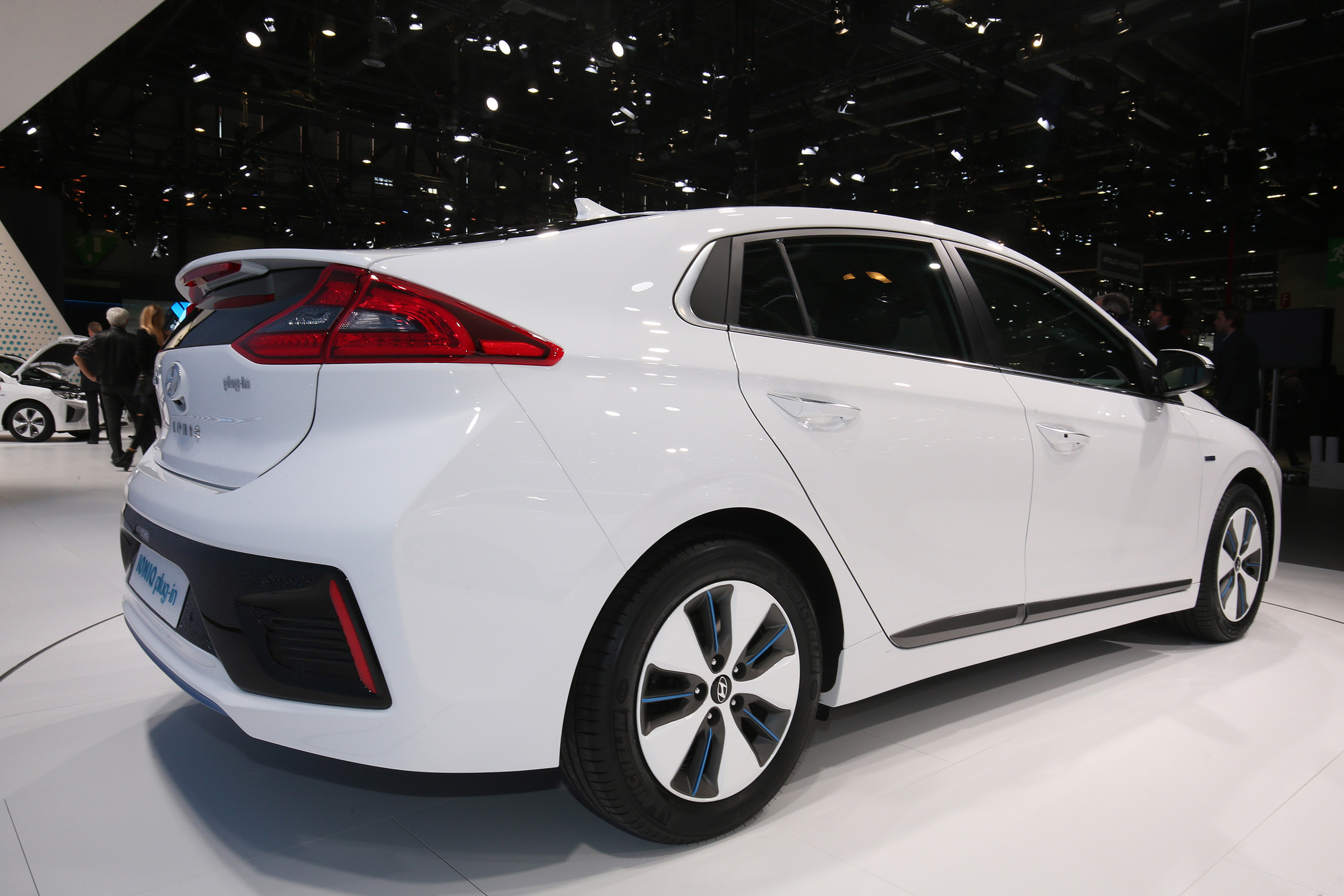
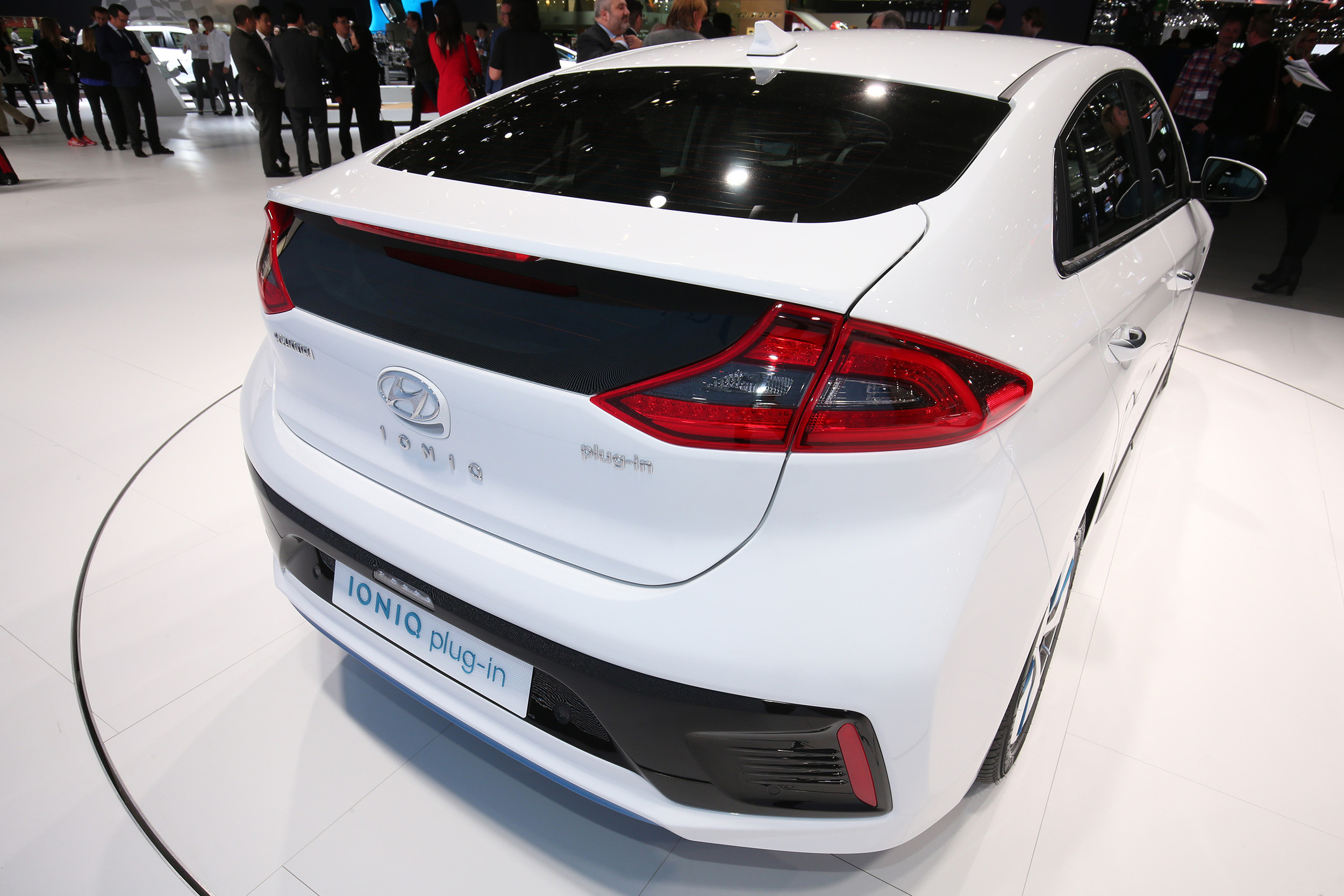
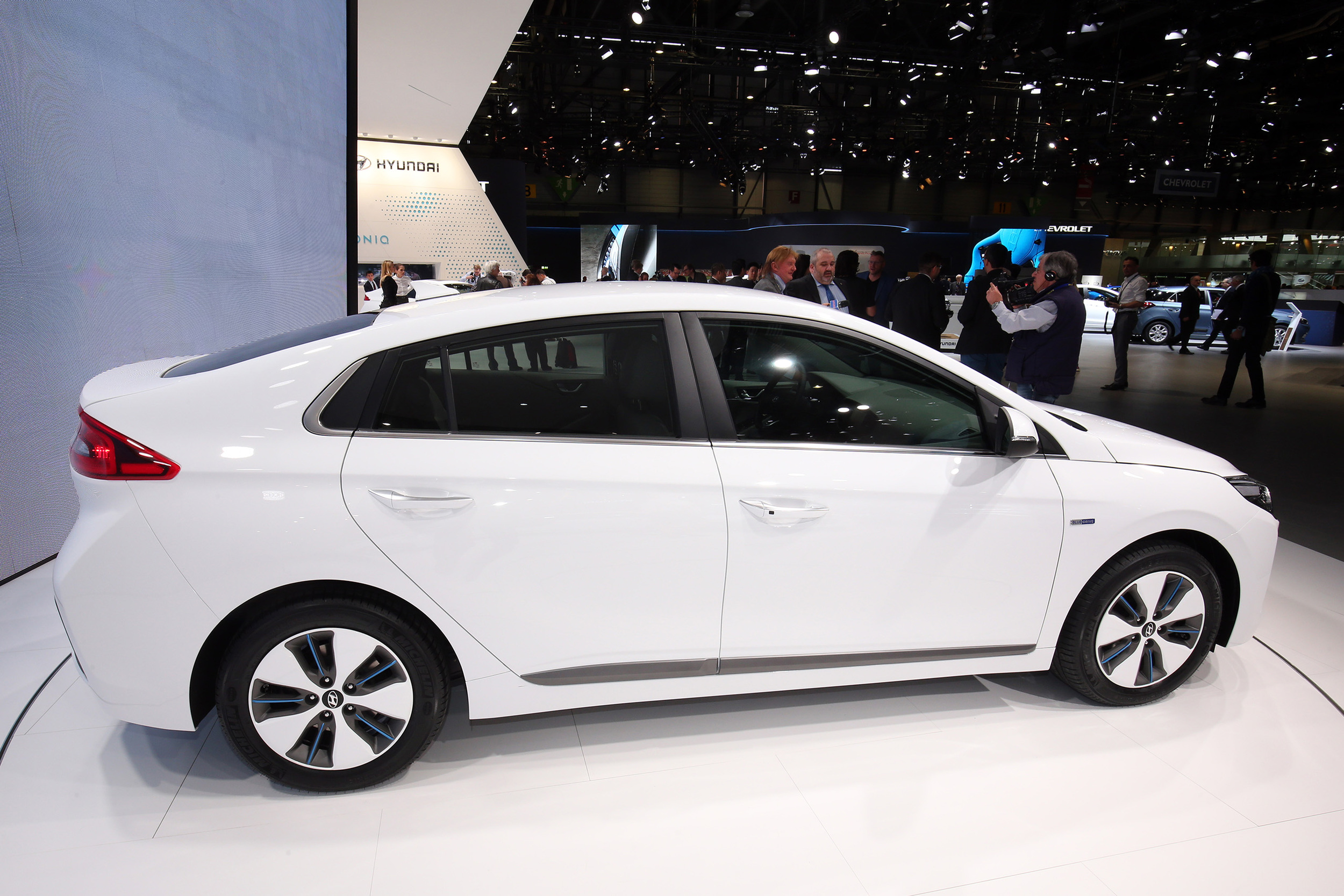
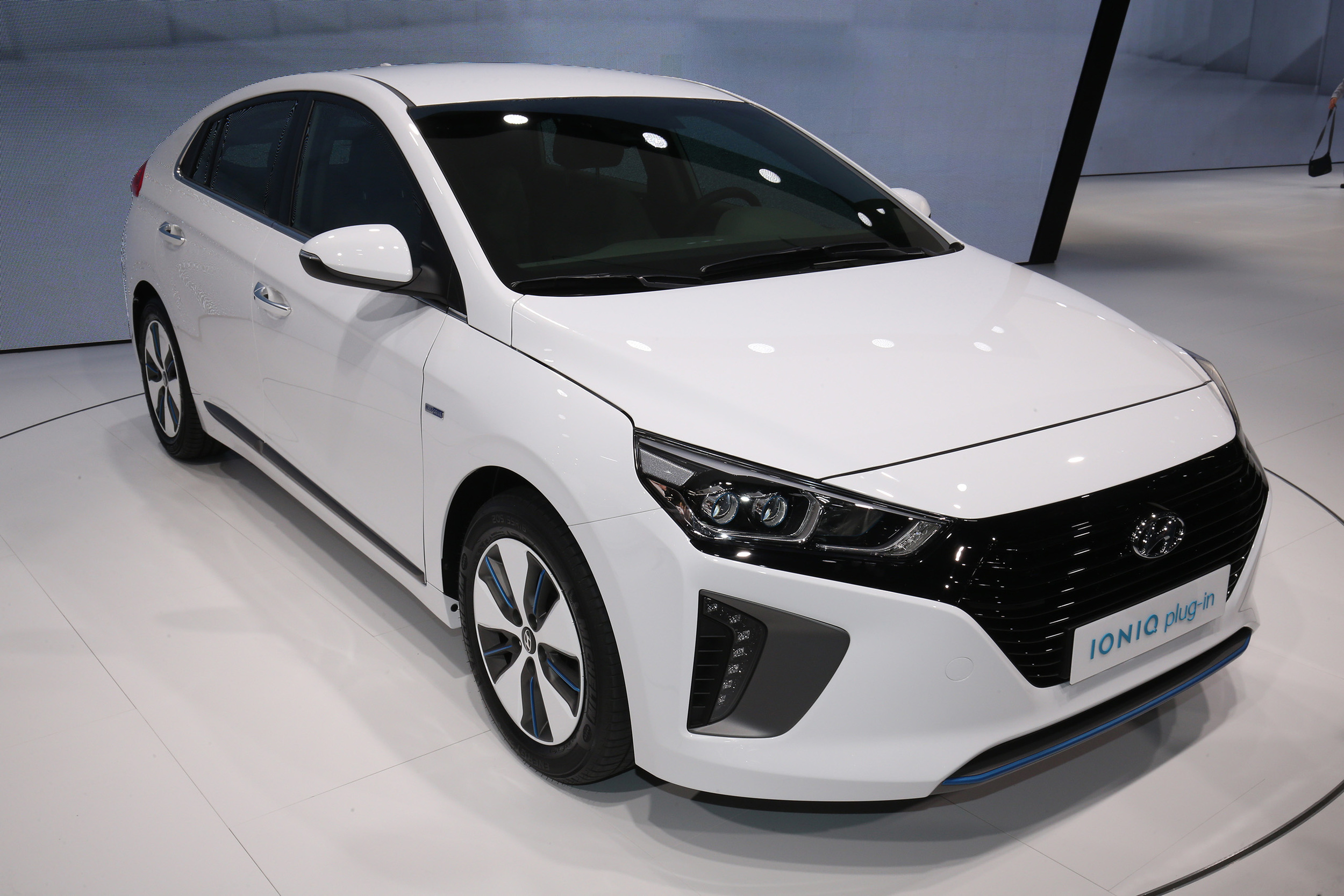
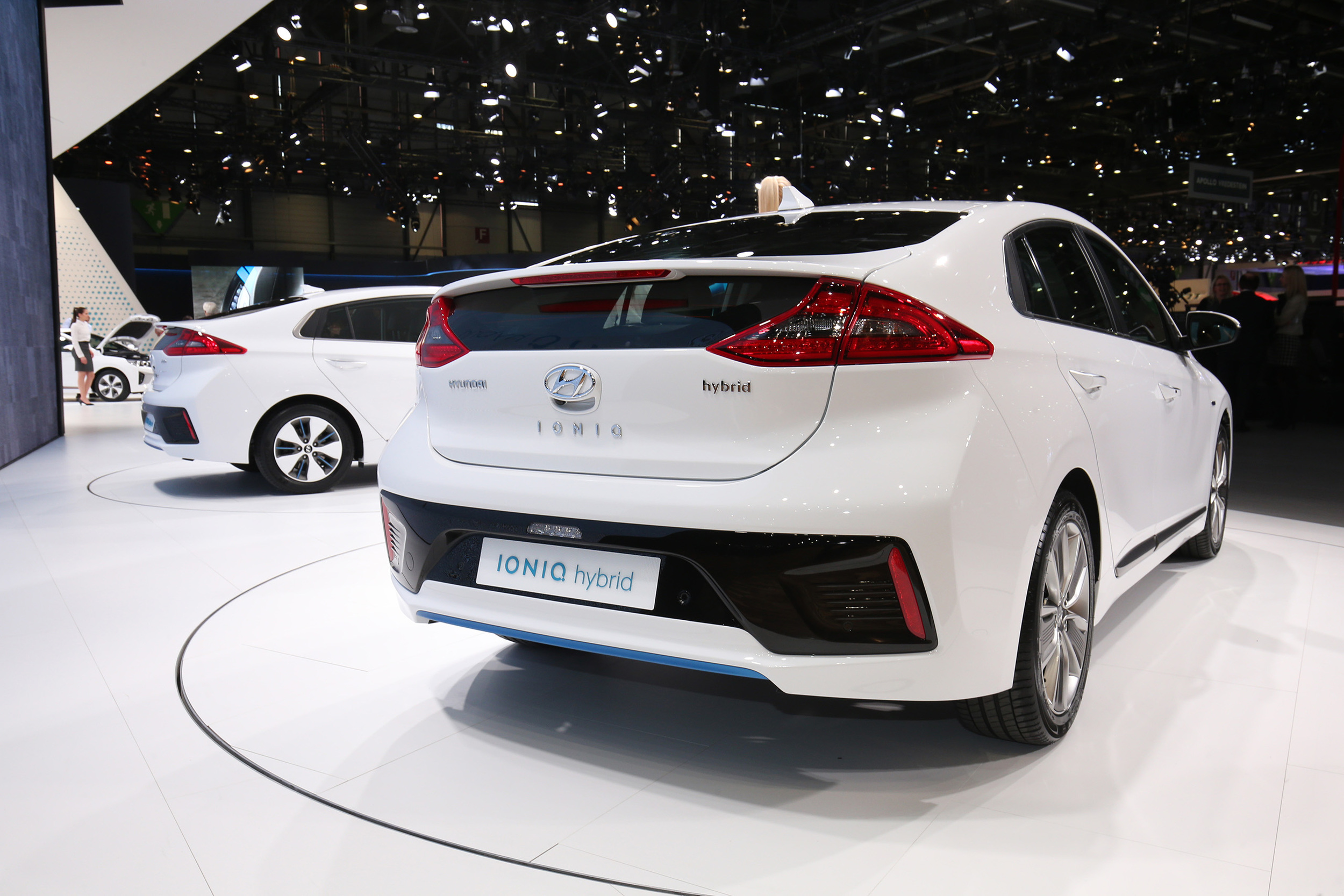
Hyundai pulled the covers off its all-new IONIQ electric line-up.
Consisting of the IONIQ Hybrid, IONIQ Electric and IONIQ Plug-in, the IONIQ becomes the world’s first model offering three electrified powertrains, says Hyundai. With the intention to offer low- to zero-emission mobility to everyone, Jochen Sengpiehl, Vice President Marketing at Hyundai Motor Europe, said: “IONIQ is an important step forward for our brand in Europe. We are bringing a unique new approach to e-mobility, with no compromise on great design, driving pleasure and new connectivity features. And we’re making it accessible to more customers, further extending our product line-up.”
The IONIQ Hybrid and IONIQ Plug-in both feature the new Kappa 1.6 GDI, direct injection petrol, four-cylinder engine with a thermal efficiency of 40 percent, delivering 105 PS and 147 Nm of torque. The engine has been tailored to the hybrid application and is combined with the direct responding, smooth shifting six-speed double clutch transmission. The mated electric motor enables pure electric driving and delivers instant torque as the chassis with rear multi-link suspension ‘greatly enhancing driving dynamics’.
The IONIQ Hybrid’s electric motor delivers 32 kW (43.5 PS) with maximum torque of 170 Nm, powered by a lithium-ion-polymer battery with 1.56 kWh capacity positioned under the rear seats. In combination with the 1.6-GDI engine, IONIQ Hybrid offers a system output of 103.6 kW (141 PS) rpm and up to 265 Nm of torque accelerating to a top speed of up to 115mph with targeted CO2 emissions as low as 79 g/km or lower (combined).
The IONIQ Plug-in can rely on over 31 miles of estimated pure electric driving range powered by the 8.9 kWh lithium-ion polymer battery. The 45kW (61 PS) electric motor together with the 1.6 GDI four-cylinder Kappa engine offer targeted CO2 emissions as low as 32 g/km.
The IONIQ Electric offers pure e-mobility through a 28 kWh lithium-ion polymer battery for an estimated maximum range of over 155 miles. The instantly available maximum torque of 295 Nm is delivered by the electric motor with a maximum output of 88 kW (120 PS) through the single-speed reducer transmission accelerating the car up to 103mph.
On the inside, ‘state-of-the art’ connectivity features include Android Auto, Apple CarPlay as well as TomTom live services and wireless charging of your smartphone. Furthermore, the driving experience becomes digital through the 7-inch TFT instrument cluster displaying all key driver information. Safety features include Autonomous Emergency Braking, Lane Keep Assist System, Blind Spot Detection, Rear Cross Traffic Alert and Smart Cruise Control ensures high safety levels for drivers and passengers alike.
All versions feature the sleek aerodynamic silhouette with a Cd value of 0.24 that complements the ‘soft lines’ and surfaces that trace the IONIQ’s outline.
Coupe, Electric, Sports Car, News





BMW has revealed a new, limited model - the i8 ‘Protonic Red Edition’.
Available for a limited period only, the paintwork has been created exclusively for this car - Protonic Red with Frozen Grey metallic accents. The colour scheme is complemented by BMW W-spoke 470 light-alloy wheels painted in Orbit Grey metallic with hubs painted in Aluminium matt and mixed-size tyres (front: 215 R20, rear: 245/40).
On the inside of the plug-in-hybrid, the special edition i8 comes with ‘high-class’ red double-stitching and exclusive carbon fibre and ceramic trims.
The lightweight and aerodynamically optimised i8 was the first BMW production model to be powered by a three-cylinder petrol engine. This 1.5-litre engine develops 231hp and drives the rear wheels, while a maximum torque of 320Nm is available from 3,700rpm. The car’s second power source is a 96 kW/131hp hybrid synchronous electric motor which sends its power to the front axle. The motor develops 250Nm torque from a standstill and can also power the vehicle by itself with a range in everyday driving of up to 22 miles and a top speed of 75mph on electric power alone. Top speed is 155mph, 0-62 takes 4.4 seconds while the i8 emitts 59g/km of CO2 and returns 113mpg.
The BMW i8 Protonic Red Edition will be produced from July onwards and will officially be on sale from September, 2016 priced at £112,535 OTR.
Electric, Coupe, Sports Car, News

The nanoFlowcell QUANTiNO has become the first low-voltage electric vehicle to be licensed for road use in Europe.
First test drives of the latest model from the QUANT range are planned for later in 2016. The nanoFlowcell power unit enables a range of over 600 miles (precise range figures will be determined during these tests) with zero-emissions.
The QUANTiNO is now the second vehicle with nanoFlowcell technology, alongside the QUANT-E. The 2+2-seater is notable for its low-voltage electrical system, with a rated voltage of just 48 volts it can generate 80 kW/108 hp for a 0 to 62mph time of less than five seconds and the top speed of 124mph.
The low-voltage system forms ‘an exceptionally efficient symbiosis’ that promises a ‘significantly greater potential range’ compared with the systems commonly used in electric vehicles. Furthermore, it eliminates the danger of electric shocks that can be caused by a high-voltage system in the event of an accident or when undertaking repair work.
The nanoFlowcell vehicle runs with absolutely no emissions, while the ‘ionic liquid’ (electrolyte fuel) is harmless to the environment and to health, is described as cost-effective to produce. The ionic liquids are nontoxic and nonflammable with no need for high-level safety protocols.
nanoFlowcell describes the QUANTiNO as ‘remarkably straightforward’ to drive and as easy to control as a conventional electric car or a petrol-driven vehicle. It also comes with plenty of 'electro-dynamic driving fun and a whisper-quiet soundtrack'. Likewise, filling up the QUANTiNO with ionic liquid involves a process similar to that for a petrol-powered vehicle – with a hose and a refuelling nozzle.
nanoFlowcell AG will present further details on the QUANTiNO and other nanoFlowcell technology showcases at this year’s Geneva Motor Show.
Concept Car, Electric, Motorshow, News, Sports Car
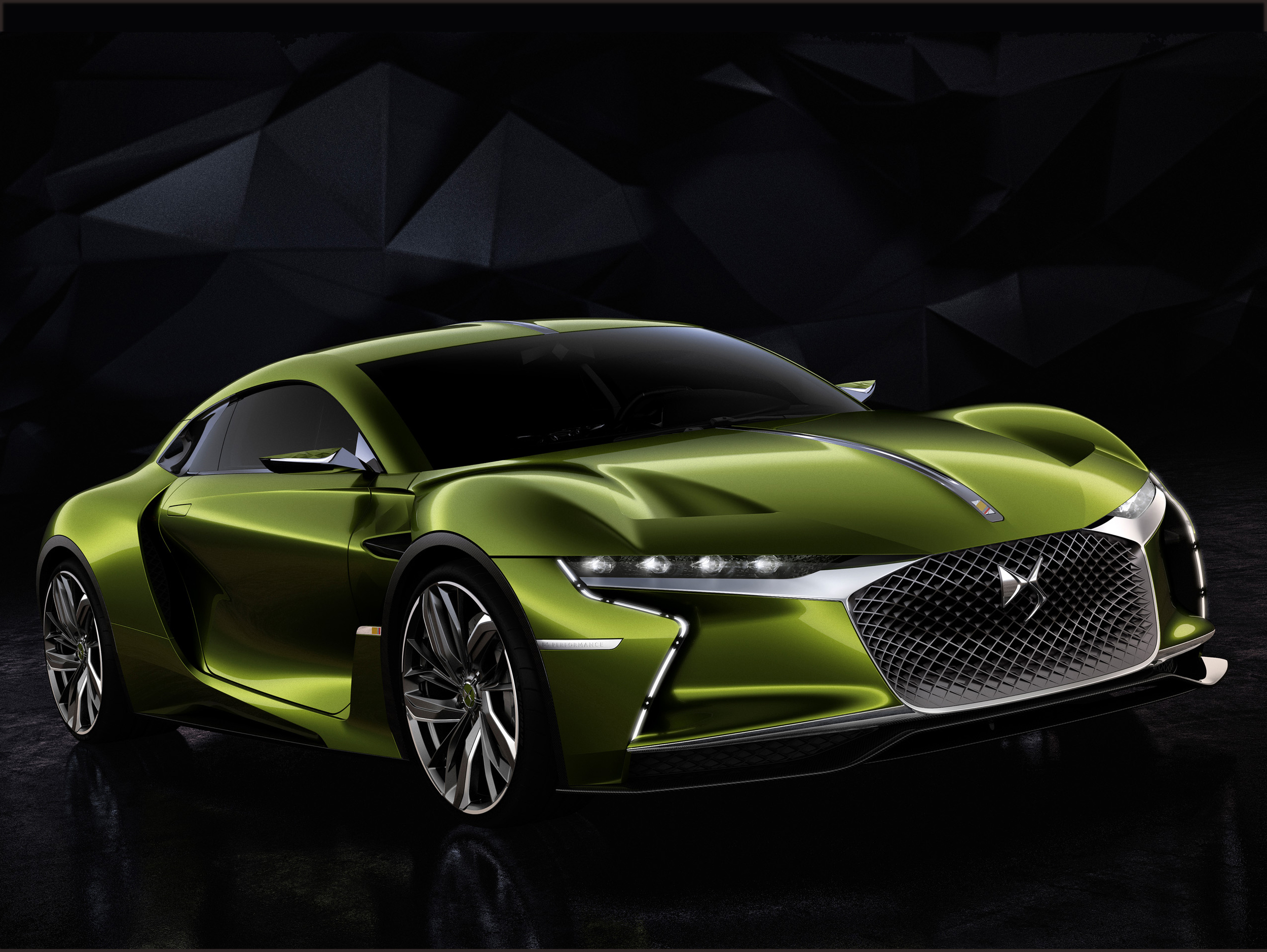
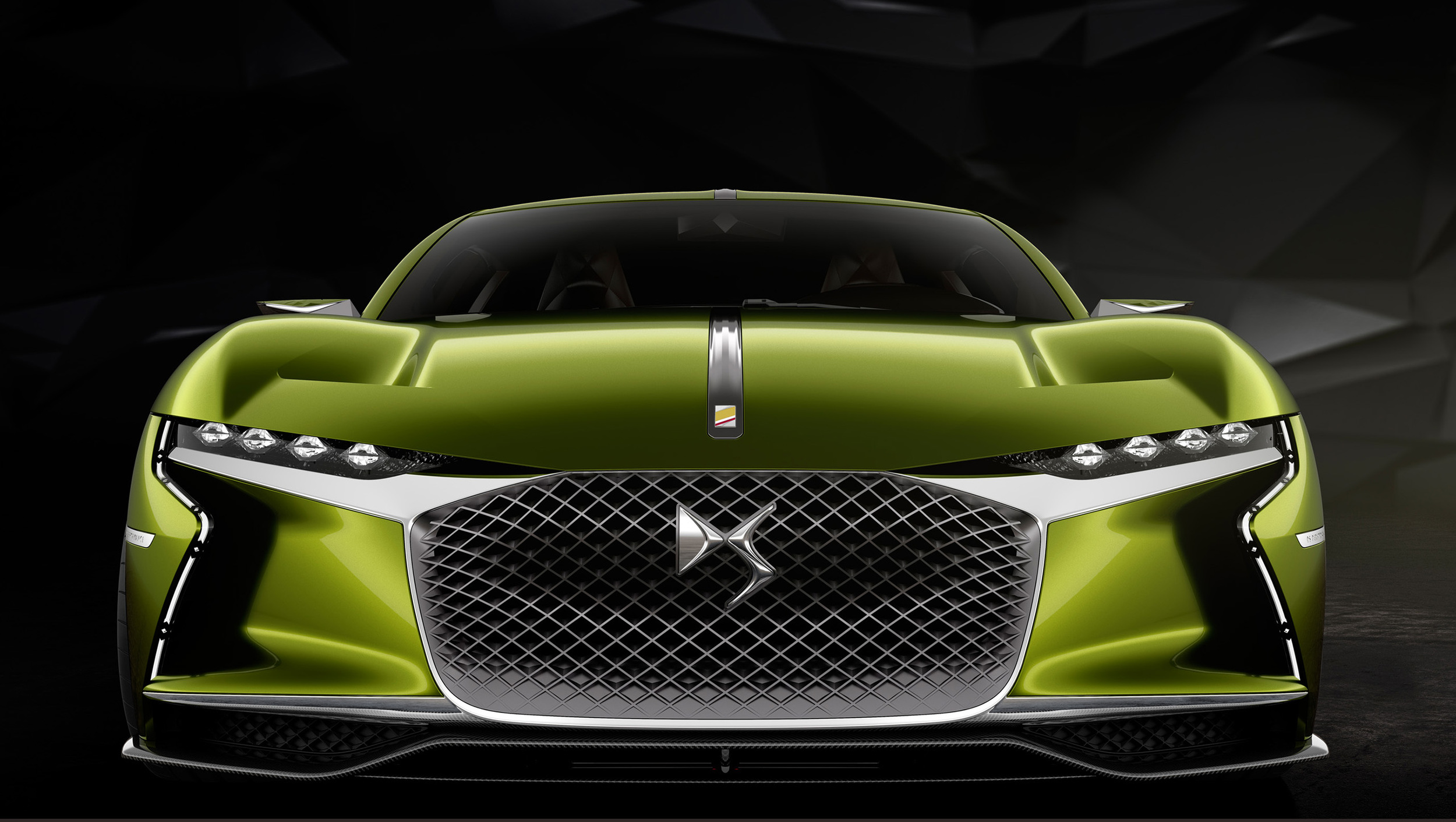
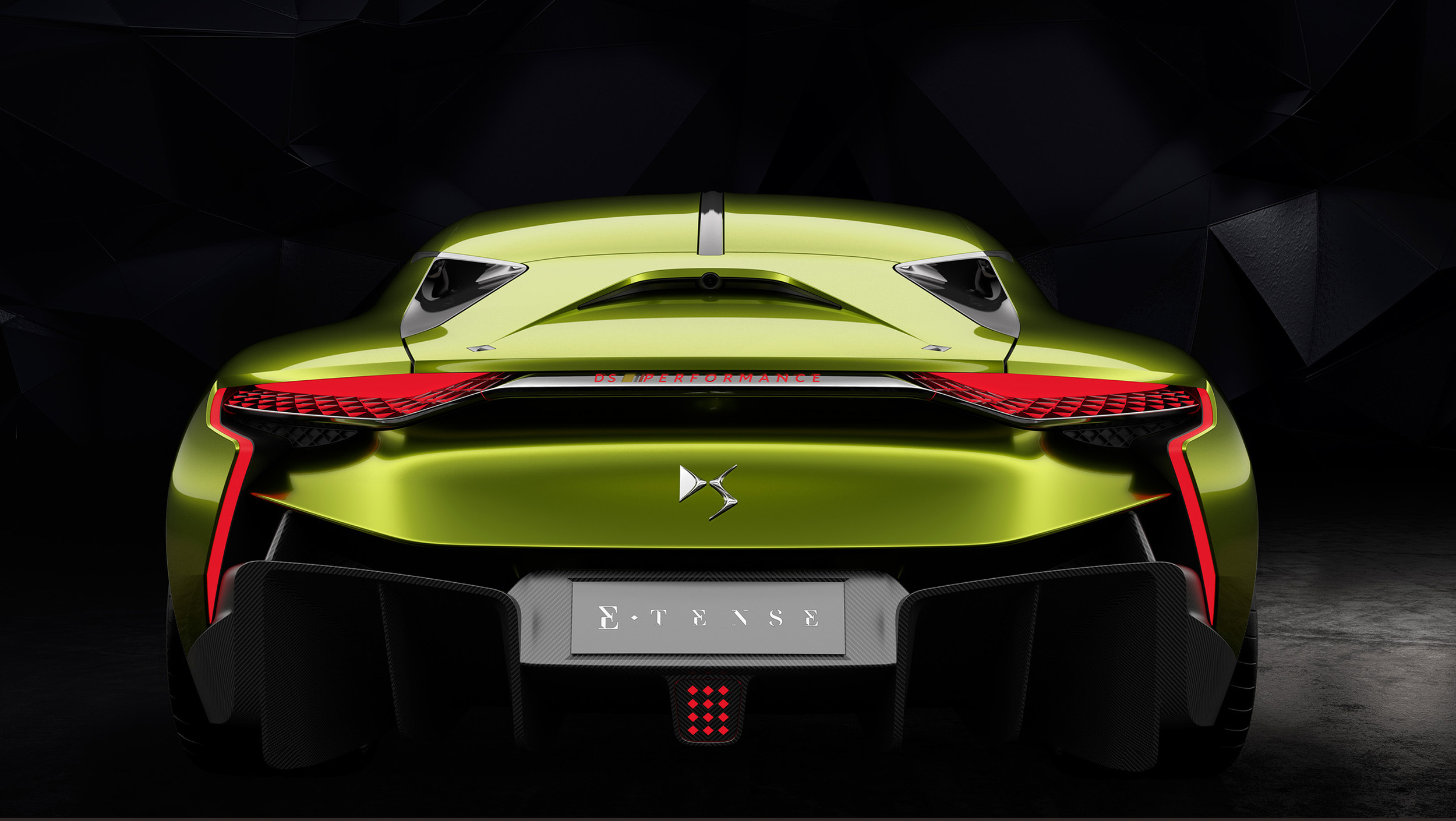
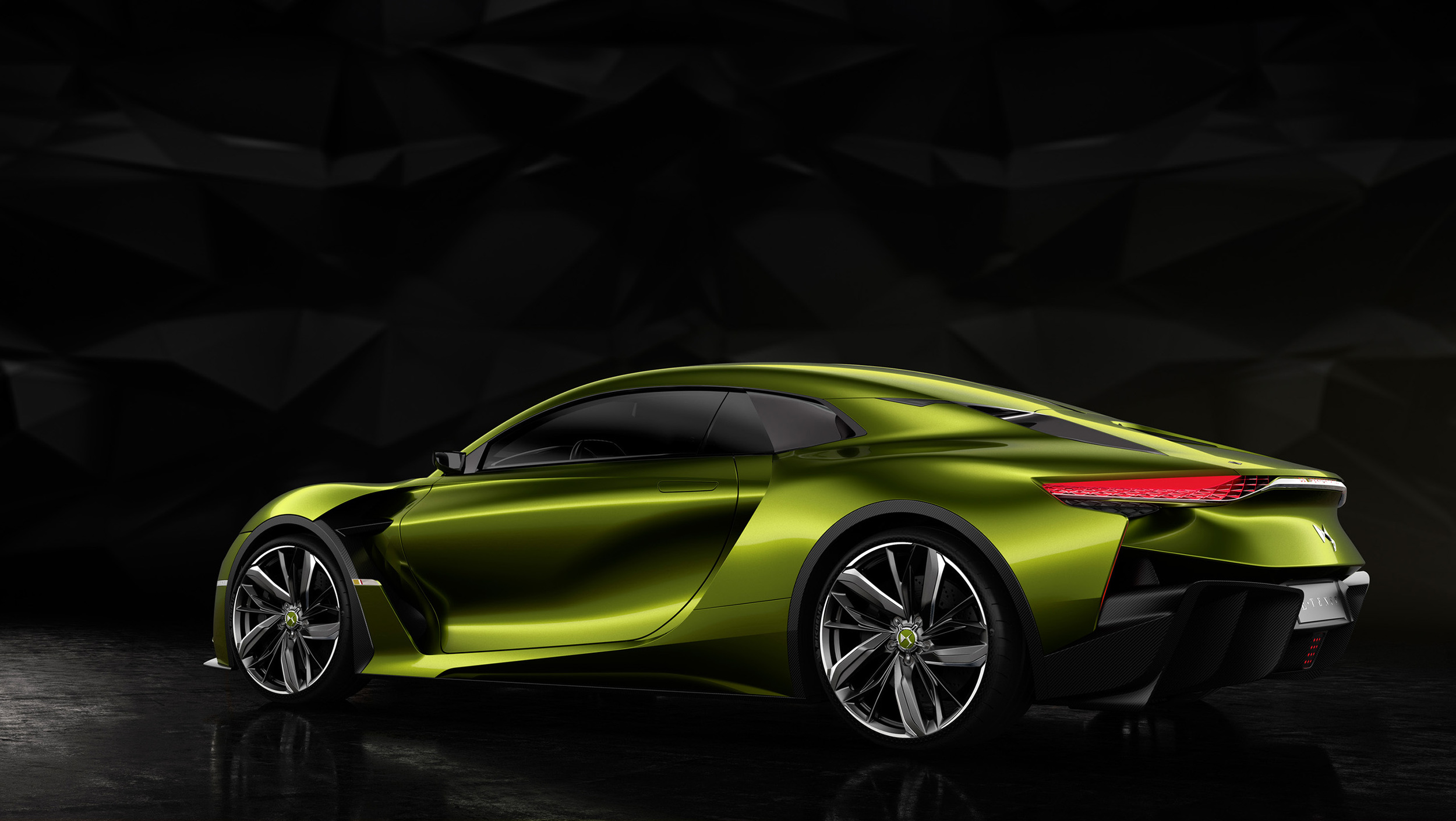
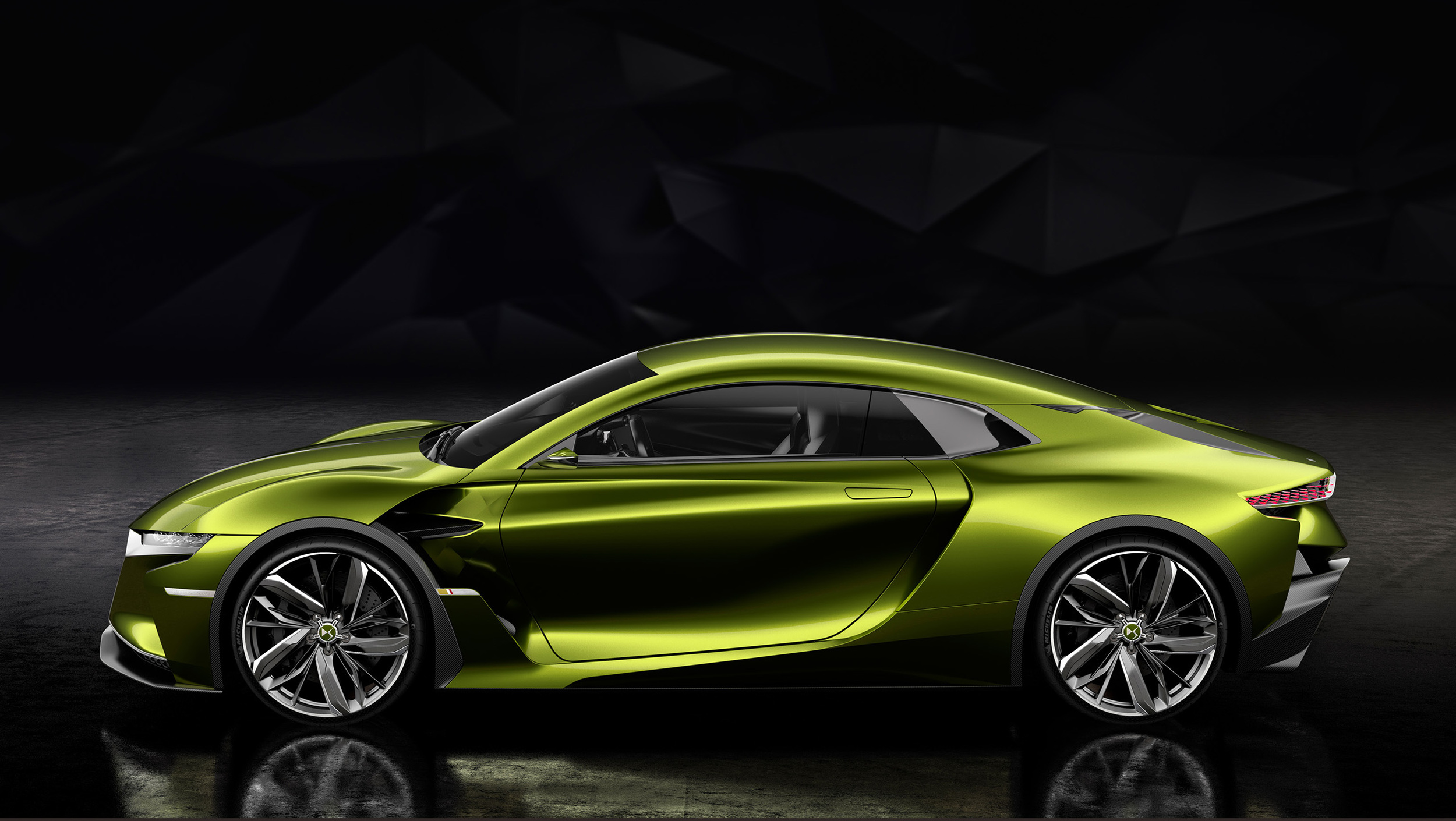
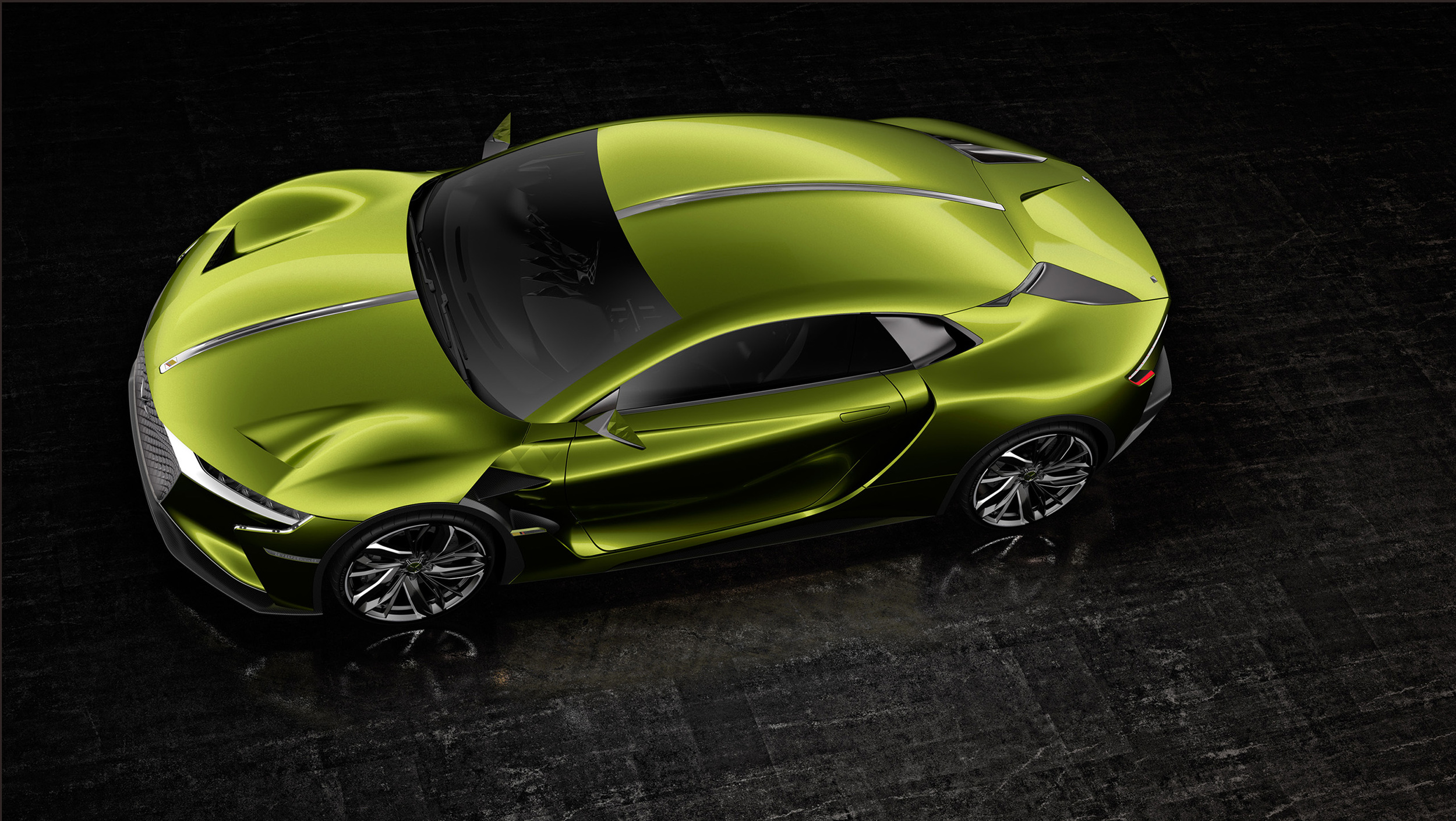
DS Automobiles is set to pull the covers off a unique Supercar at the 2016 Geneva Motor Show next week.
The French brand will unveil the DS E-TENSE electric-powered sports car, which features a ‘striking appearance’ as well as hi-tech capability and ‘exceptional’ performance.
The all-electric concept silently produces 402hp with zero emissions. Measuring 4.72m long and 1.29m high, DS says its ambition is to create a high-performance electric GT car that brings together ‘state-of-the-art technology and avant-garde design’.
The new car's styling merges flowing lines with a silhouette of a grand tourer coupe - emphasised by a central chrome-plated spine and an exclusive metallic green ‘ametrine’ body colour. Removing the rear windscreen at the back allowed the design team freedom to mould the contours further and make use of digital rear-view technology.
The DS LED Vision headlamps are described as jewel-like in design. The daytime running lights – designed to look like beaded stitches, are a ‘nod to the world of high fashion’ says the French company. At the rear, the indicators integrated into the roof are inspired by the original DS from 1955.
On the inside DS says upholsterers took 800 hours to design, test and produce the interior, with a particular emphasis on the watchstrap style design on the seats and dashboard. Other features include the 'cold steel' used for the dashboard, creating a futuristic look, and the strongly marked tulip-shape of the steering wheel.
As a Formula E World Championship competitor, DS Automobiles has equipped its latest creation with a 100 per cent electric 402hp engine that produces 516Nm of torque, delivering propulsion that is clean, silent, but above all efficient and powerful offering 193 miles mixed cycle range (or 224 miles urban cycle).
The two-seater monocoque chassis is manufactured from carbon fibre and equipped with independent superimposed double wishbone suspension. As the batteries are located beneath the floor, the centre of gravity is low. Meanwhile, the streamlined silhouette, the carbon fibre diffuser and the flat underbody all contribute to its aerodynamic performance.
The Geneva Motor Show opens its doors on 3 March.
Concept Car, 4x4, Electric, Motorshow, News, SUV
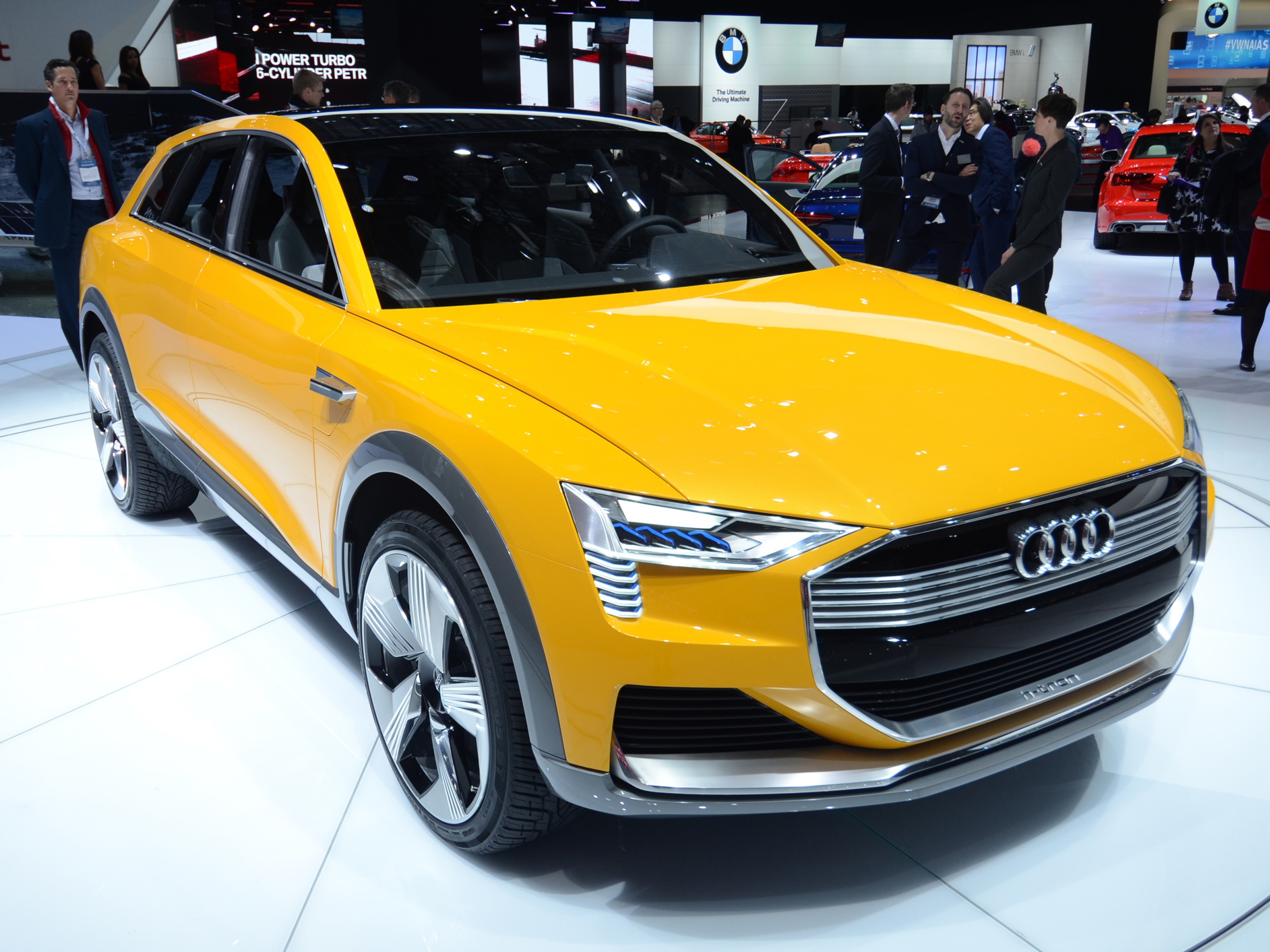
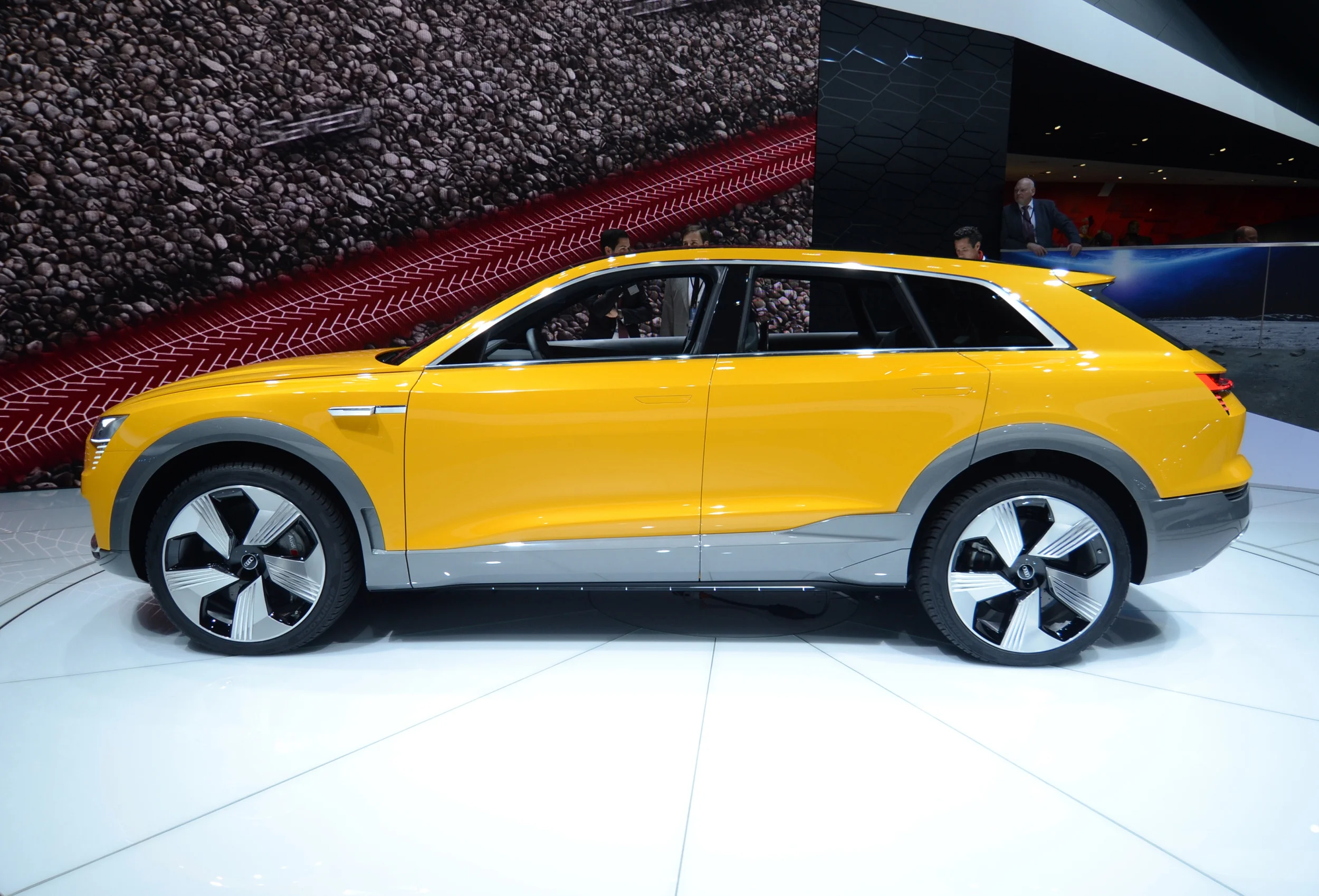
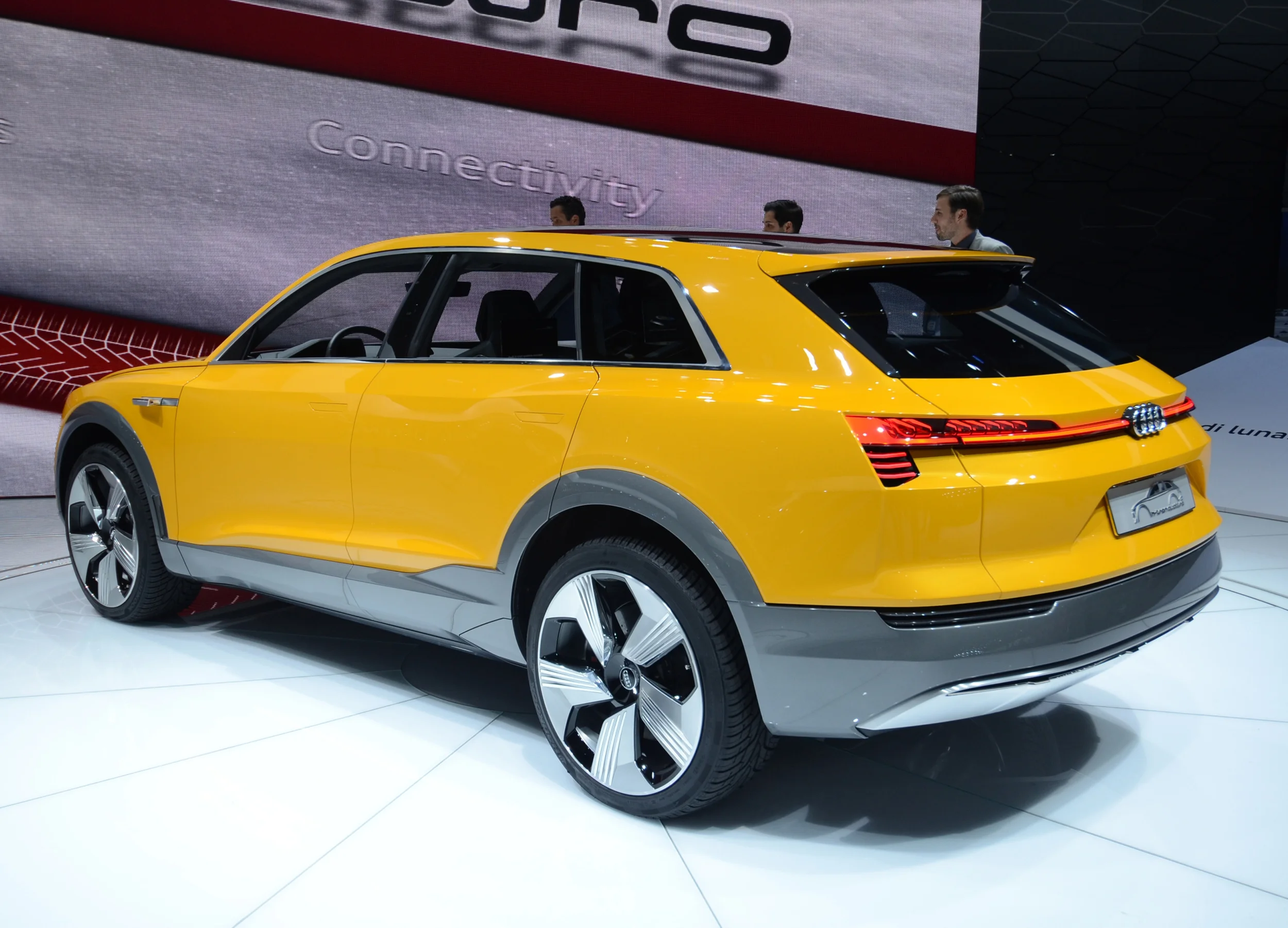
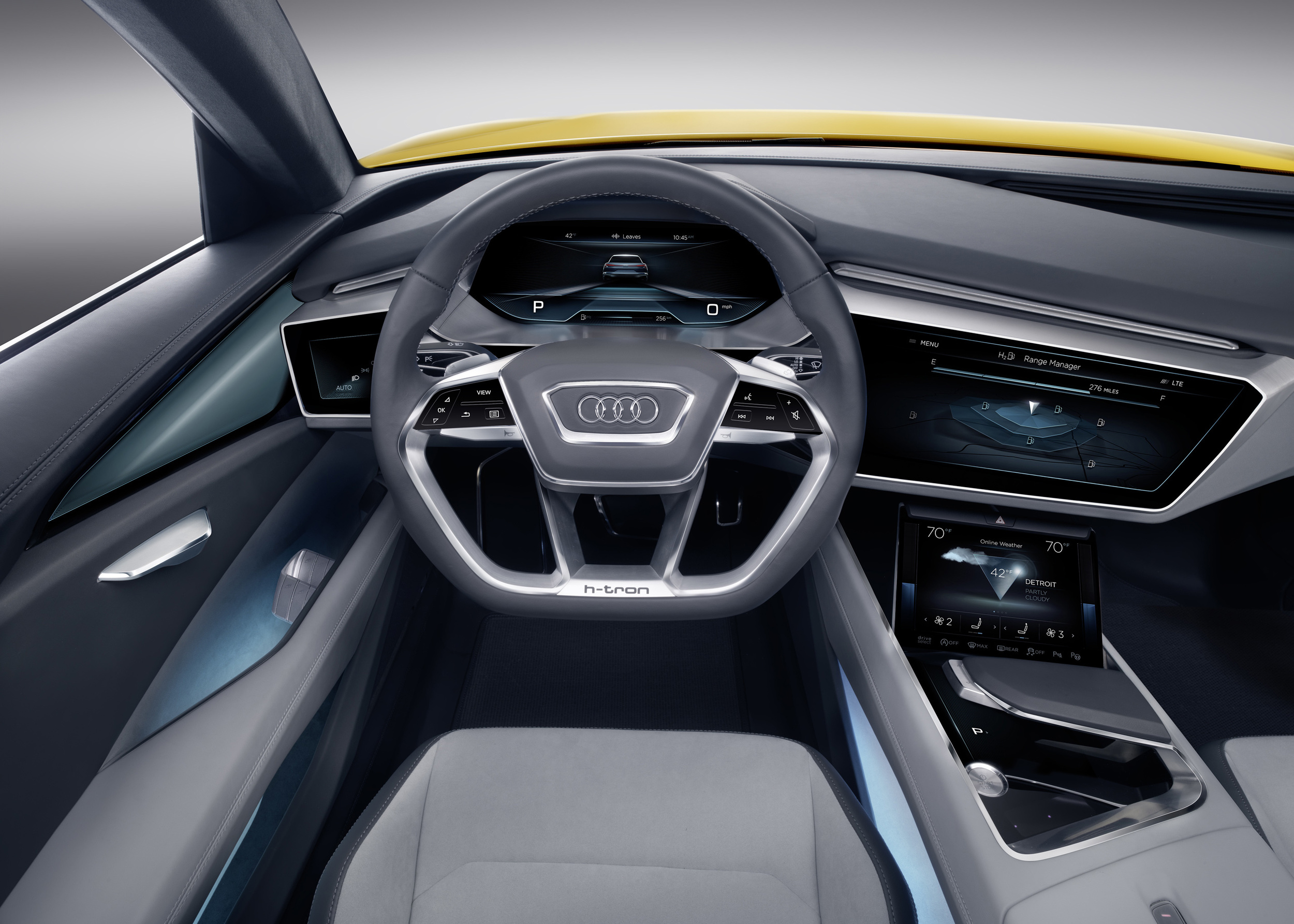
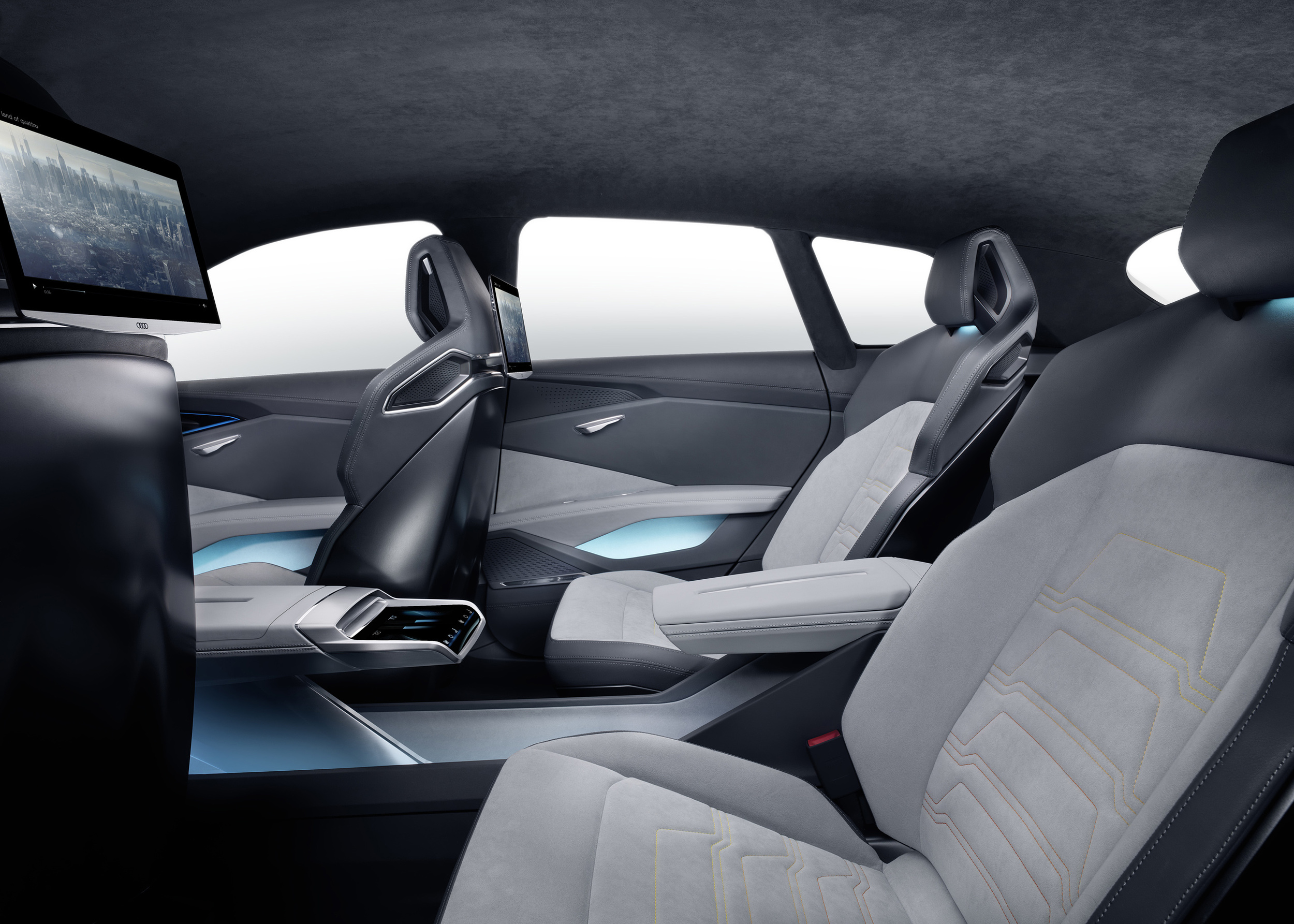
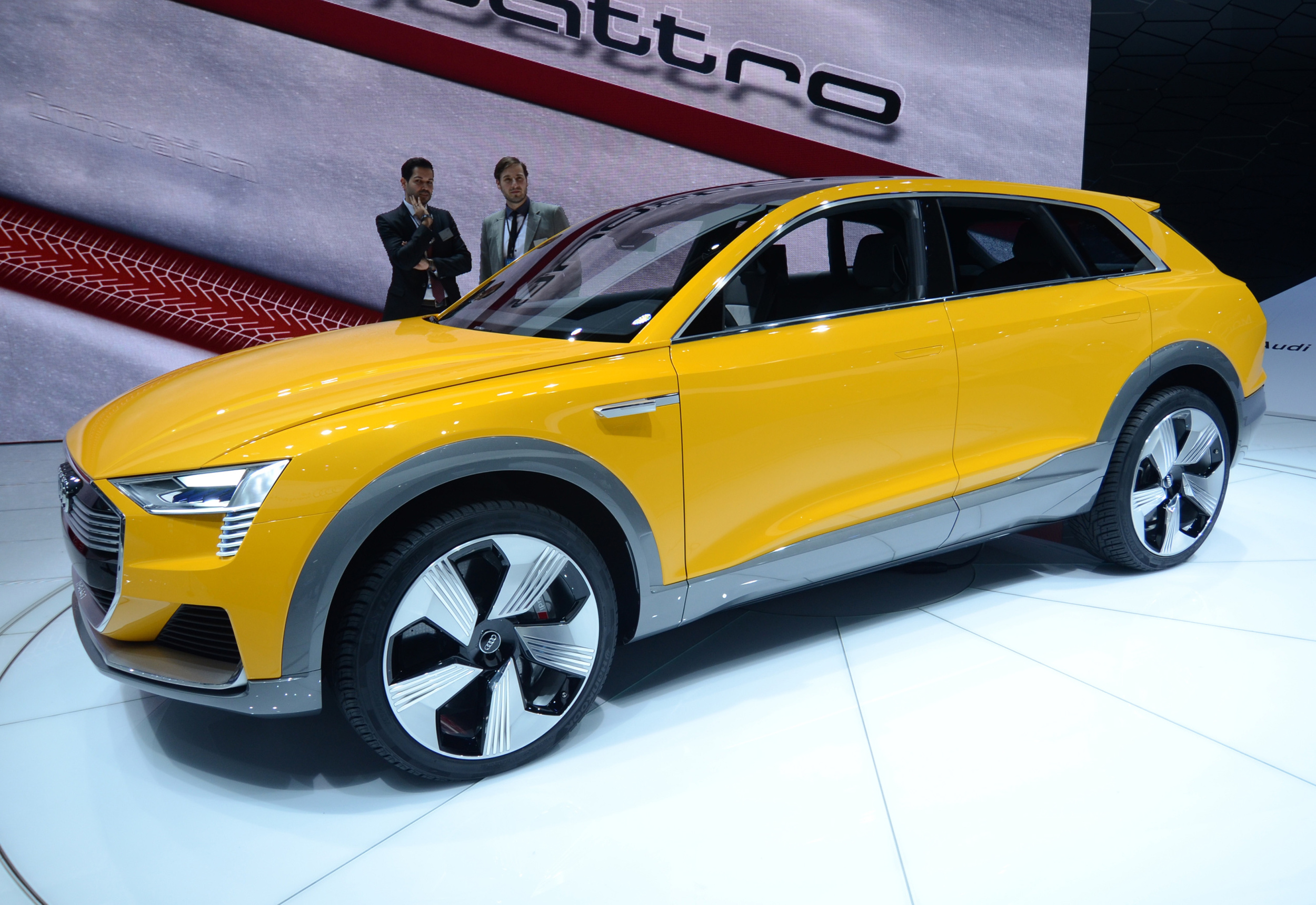


Audi has pulled the covers off the h-tron quattro concept car at the NAIAS in Detroit
Described as the next step towards the long-term Audi goal of CO2-neutral mobility, the SUV concept is powered by a fuel cell with an output of up to 110 kW backed up by a further on-demand power boost of 100 kW from a lightweight lithium-ion battery.
Total system torque of 550 Nm equates to acceleration from 0-62 mph in under seven seconds and a 124 mph top speed.
It can be fully refuelled with hydrogen in around four minutes, and is then ready to drive for up to 372 miles (600 km). An extra energy boost comes from the fitment of the world’s largest in-car solar roof, offering up to 320 watts output or additional range of up to 620 miles (1,000km) per year
The h‑tron quattro concept is closely related to the fully electric e‑tron quattro concept SUV which made its debut at the 2015 Frankfurt Motor Show. Both cars are based on the second-generation modular longitudinal platform (MLB evo), sharing a virtually identical floor assembly despite their different technology.
The h‑tron quattro concept presents the fifth generation of fuel cell technology from Audi and Volkswagen, using lighter materials to reduce weight and improve performance, responsiveness, service life and efficiency.
With an efficiency rating in excess of 60 percent, Audi claims that the fuel cell now surpasses any combustion engine. The “stack”, comprising 330 individual cells, is housed in the forward structure.
The three hydrogen tanks are located beneath the passenger or luggage compartment. At a pressure of 700 bar, they store enough hydrogen for a range of up to 372 miles (600 km).
Every tank is made up of several layers – the inner tank from gas-tight polyamide is wrapped in carbon fibre reinforced polymer (CFRP) and glass fibre reinforced polymer (GFRP). Like a car with a combustion engine, refueling takes about four minutes.
Offering seating for four adults and 500 liitres of luggage space, the five-door Audi h‑tron quattro concept is 4.88 metres long and 1.93 metres wide but its relatively low height of 1.54 metres contributes to a drag coefficient of 0.27. Aerodynamic elements down the flanks, on the underbody and at the rear improve airflow around the car at higher speeds, while cameras take the place of exterior mirrors, to improve efficiency still further.
The h-tron’s headlights and tail lights utilise a combination of high-resolution Matrix laser technology and flat OLED (organic light emitting diode) elements which radiate a blue light to the sides and upwards.
The concept also comes equipped with all the Audi’s piloted driving technologies – radar sensors, a new kind of video camera, ultrasonic sensors and a laser scanner.
Audi says it will be taking this technology into production for the first time ever in 2017, with the next generation of its A8 Saloon.
Electric, Events, News, Hatchback






The Renault-Nissan Alliance has confirmed it will launch more than 10 vehicles with autonomous drive technology in the next four years.
The global car group confirmed the range of vehicles with autonomous capabilities will roll-out in the United States, Europe, Japan and China through 2020. The technology will be installed on mainstream, mass-market cars ‘at affordable prices’. The car group has hired new executive to oversee connectivity and connected car services globally.
Safety and efficiency of vehicles across the Renault-Nissan Alliance has ‘increased dramatically’, with fatal and serious injuries in Japanese Nissan vehicles decreasing 61 percent in 20 years. Fatal and serious injuries in Renault vehicles in France decreased 80 percent in 15 years. Autonomous drive is expected to help further reduce driver error, which is responsible for up to 90 percent of all fatalities.
2016 will mark the debut of vehicles with ‘single-lane control’ a feature that allows cars to drive autonomously on motorways, including in heavy, stop-and-go traffic. In 2018, Renault-Nissan will launch vehicles with ‘multiple-lane control’ which can autonomously negotiate hazards and change lanes during motorway driving. And 2020 will see the launch of ‘intersection autonomy’ which can navigate city intersections and heavy urban traffic without driver intervention.
Later this year the Alliance will launch a new automotive mobile app which allows remote interaction with your car. Next year, it will launch the first Alliance Multimedia System providing new multimedia and navigation features, as well as improved smartphone integration and wireless map updates.
“Renault-Nissan Alliance is deeply committed to the twin goals of ‘zero emissions and zero fatalities'” Renault-Nissan Alliance Chairman and CEO Carlos Ghosn said at the Renault-Nissan Silicon Valley Research Center. “That’s why we are developing autonomous driving and connectivity for mass-market, mainstream vehicles on three continents.”
The Renault-Nissan Alliance is a partnership between Paris-based Renault and Yokohama, Japan-based Nissan and have been strategic partners since 1999.
Electric, Hybrid, Hydrogen Fuel Cell Car, News, Family Car


Following its unveiling to the media in South Korea, Hyundai has confirmed details of its next generation of hybrid vehicles, dubbed IONIQ.
Rag Jung, Head of Project Management Division at Hyundai's R&D Centre said, "IONIQ embodies Hyundai Motor's new thinking and bold ambitions for the future. This world-class dedicated hybrid will be the starting point of our future mobility."
Built on a chassis created specifically to carry the world's first choice of three efficient and ultra-low emission powertrains, the IONIQ contains 53% Advanced High Strength Steel combined with lightweight aluminum. The new model saves 12.6kg (45%) of weight by casting non-structural bodywork from aluminum, such as the hood, tailgate and suspension components. Where crash structure or energy absorption is necessary, the structure features Advanced High Strength Steel that can withstand significant collision forces.
The new model was created with 'dynamic ride and handling at its core', says Hyundai, setting it apart from other hybrid vehicles. Positioning the car's batteries low and forward achieves a low centre of gravity that enables responsive, stable cornering backed up by dual lower arm multi-link suspension fitted at the rear.
The full IONIQ range will feature a choice of electric, plug-in hybrid and hybrid powertrains, a world first for a single model. At the unveiling in Korea, details were shared for the first version to come to market - the hybrid.
With 40 percent thermal efficiency, the new 1.6-litre Kappa GDi engine developed exclusively for Hyundai's hybrid engines, combines with the permanent magnetic electric motor to deliver maximum outputs of 105PS and 47PS - engine and motor respectively.
The Lithium Ion Polymer Battery optimises output from the high voltage motor to allow for rapid regeneration while power distribution is controlled by a hybrid-exclusive Dual Clutch Transmission (DCT).
Hyundai claims power transmission efficiency of 95.7 percent will deliver a prompt response, acceleration performance and smooth gear changes to delight drivers with handling alongside the hybrid's efficiency.
Electric, Hatchback, Hydrogen Fuel Cell Car, Hybrid, News

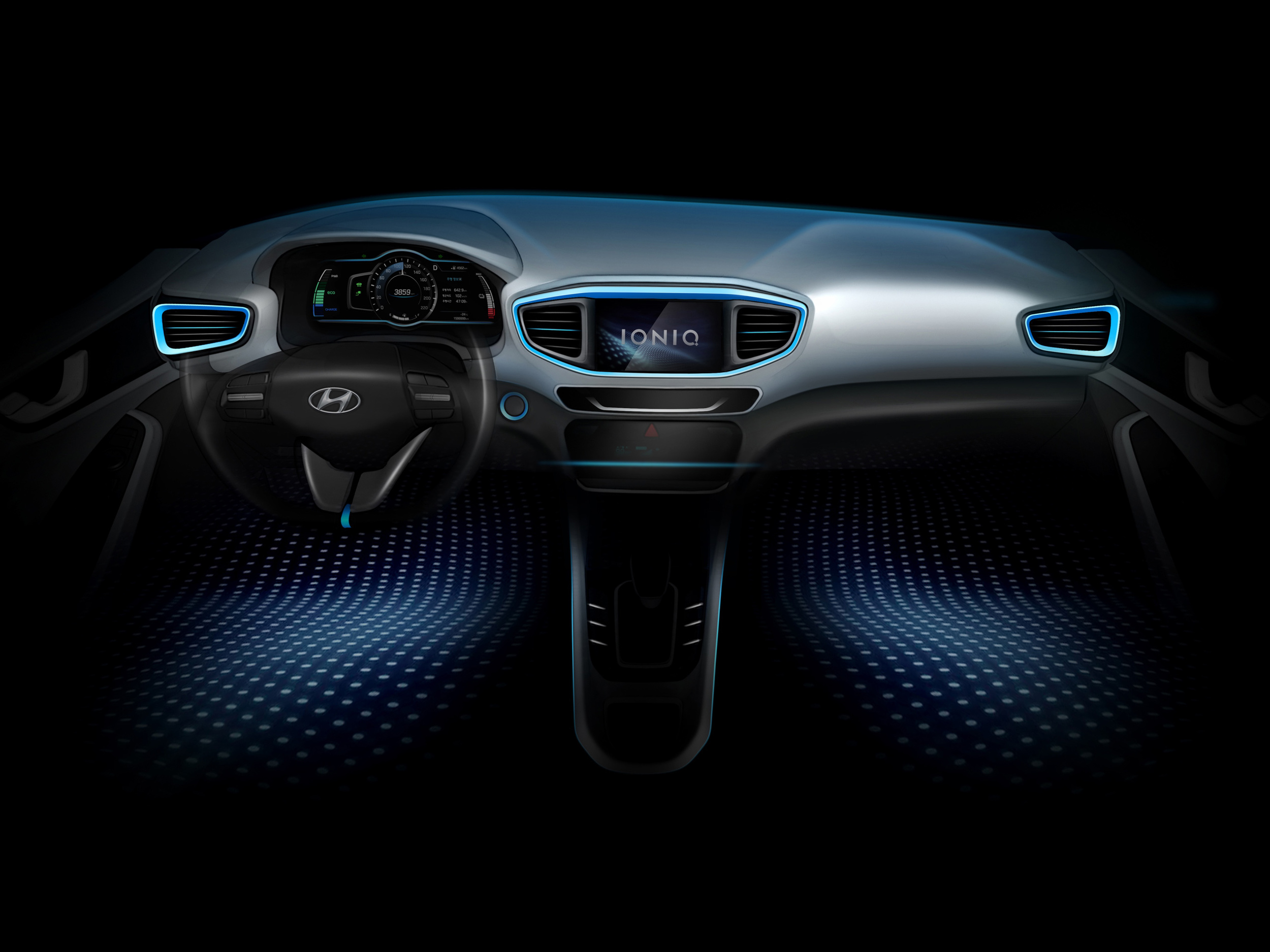
A new rendering of Hyundai’s all-new IONIQ hints at the looks of the alternative-fuel compact vehicle, which is due for launch in early 2016.
Hyundai has confirmed that the IONIQ will be the world’s first car to offer a choice of three ultra-low-emission powertrains: full electric, plug-in gasoline / electric hybrid, or gasoline / electric hybrid.
With a sleek, coupe-like silhouette, Hyundai says the IONIQ will deliver a fun and responsive driving experience, while also meeting the needs of those wishing to reduce the impact their motoring has on the environment.
At the front, it sports the familiar Hyundai hexagonal grille, topped by a gloss-black element that extends outwards to meet new headlamps featuring integrated ‘C’-position lights.
Inside the IONIQ the smooth, clutter-free theme continues. A clear, logical approach has been applied to the layout of control functions, with simple surfaces that make use of eco-friendly materials to convey, says Hyundai, ‘a futuristic yet warm cabin ambience that will appeal to a new generation of motorists’.
The IONIQ’s name references elements of its creation. An ion is an electrically-charged atom, linking to the car’s clever combination of electrified powertrains. The ‘I’ is said to reference the ‘unique offering it brings to the Hyundai range, demonstrating the brand’s environmental commitment and willingness to maximise choice for its customers’. Finally, the Q is depicted in the car’s logo as a visual breakthrough, acknowledging the fresh new approach of this advanced, low-emission model.
Following a world premiere in Korea in January, the IONIQ is due to be shown during March 2016 at the Geneva International Motor Show and the New York Auto Show.
Electric, Hatchback, News, Technology

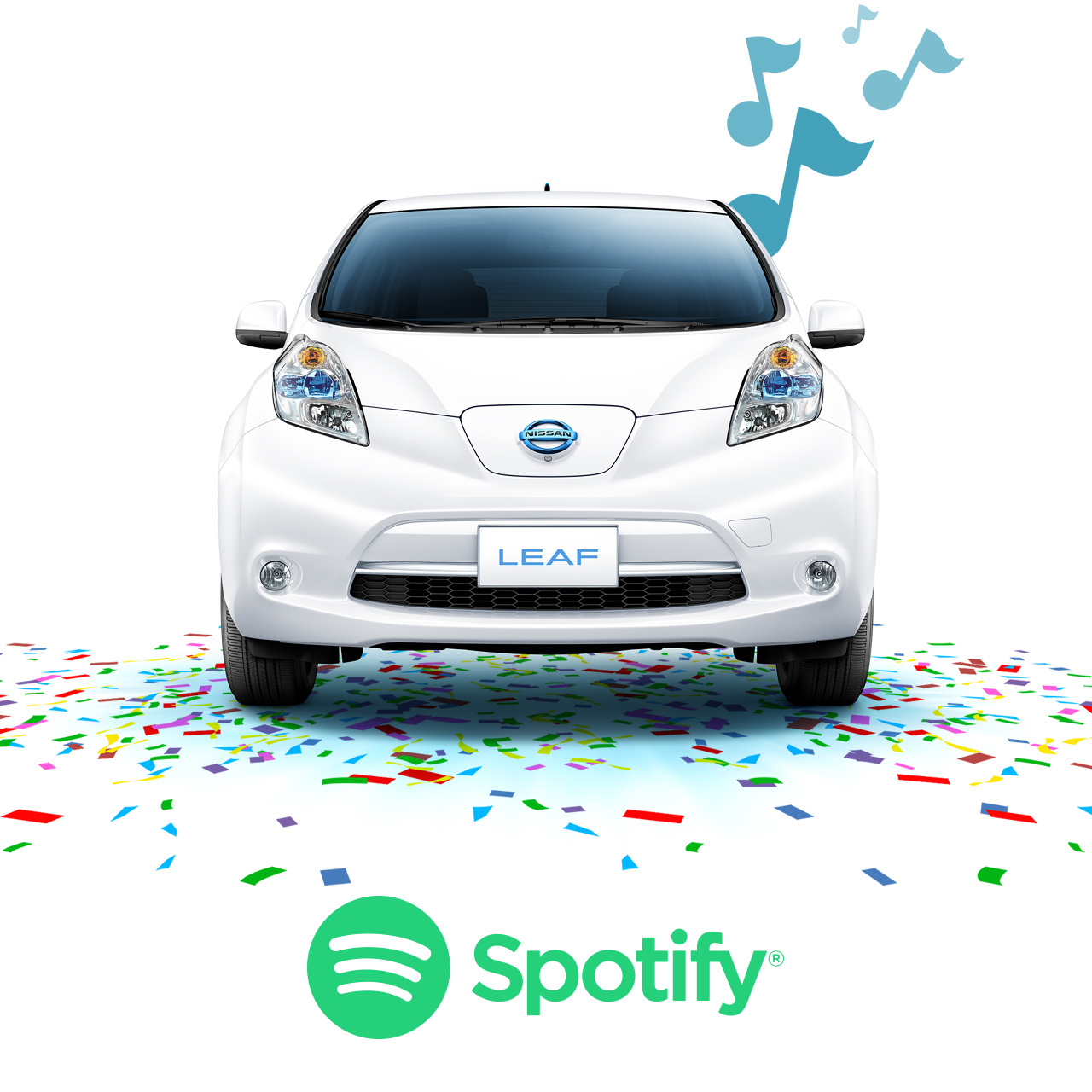
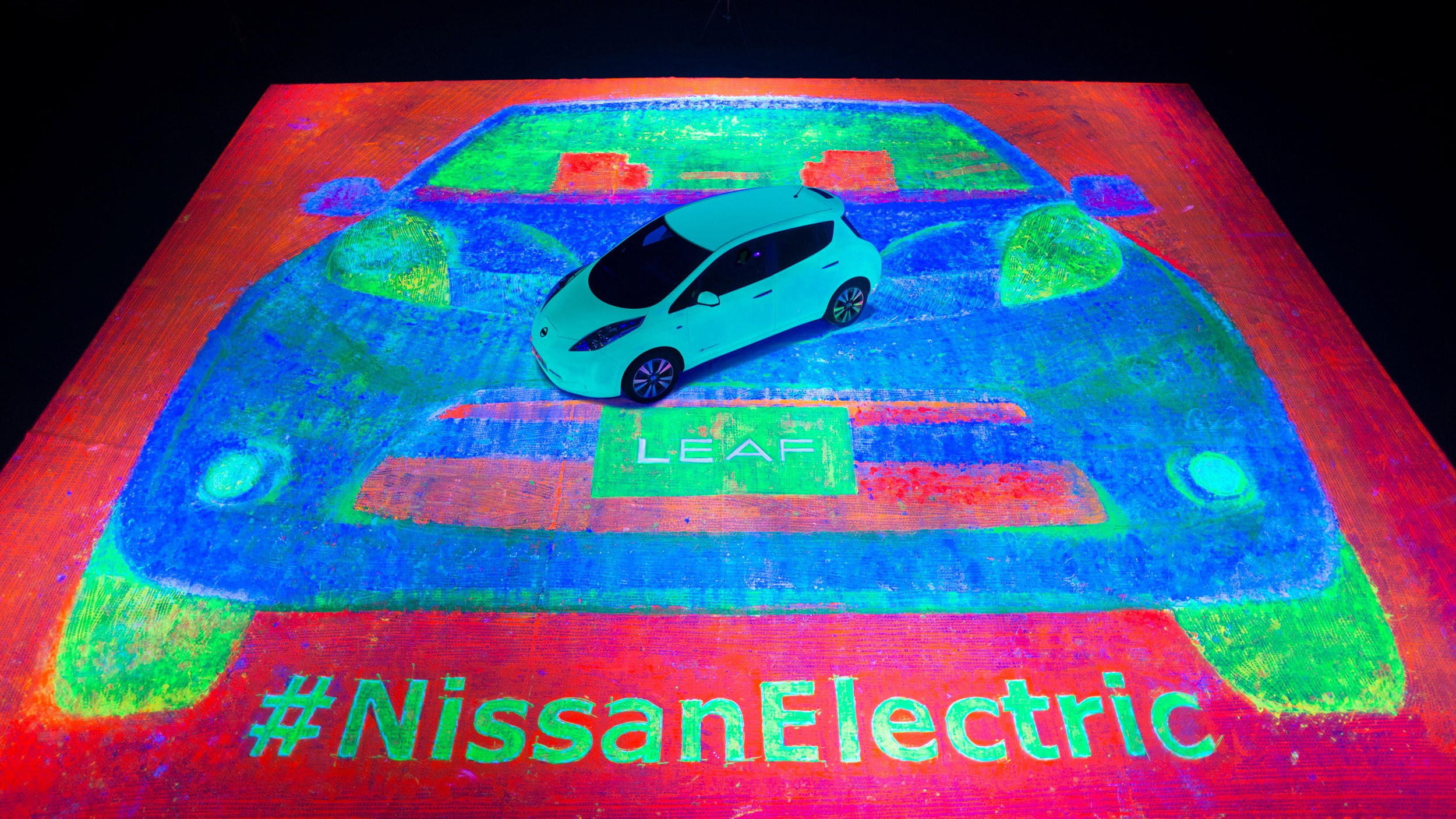

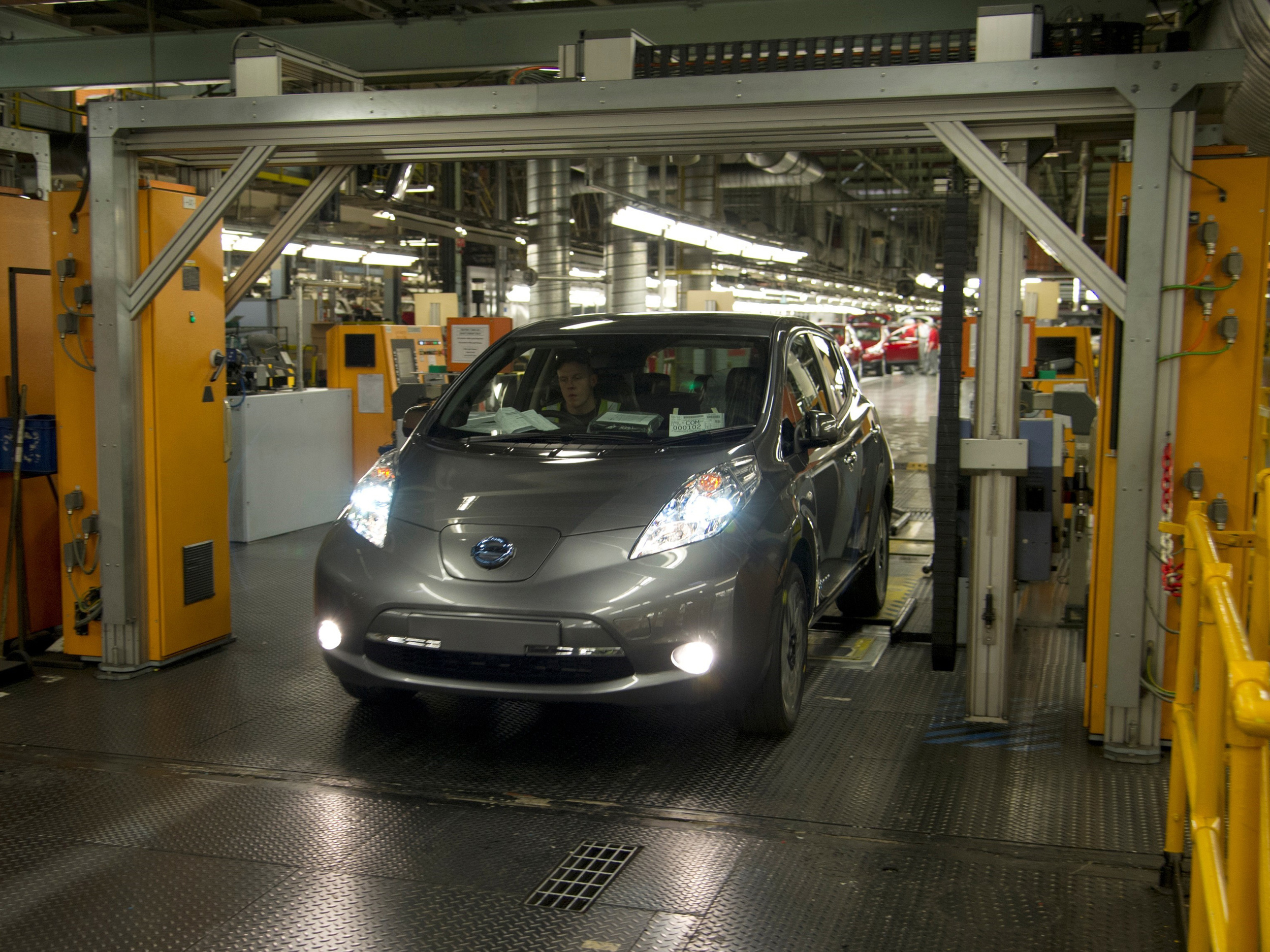

Nissan has launched a Spotify playlist specially curated by fans around the world in celebration of the fifth anniversary of the delivery of the world's first all-electric LEAF.
Users can search for the "100% Nissan LEAF 5th Birthday" playlist on Spotify and hear 10 fan-suggested songs ranging from No. 1 hits to obscure B-side tracks, all of which can be streamed via the Bluetooth connection in the LEAF or other Nissan models.
"Nissan LEAF owners are among our most enthusiastic customers, and we wanted to get them involved in a unique way as we celebrate LEAF's anniversary, so we asked followers on Facebook and Twitter which songs they would choose to honour the all-electric vehicle's five years on the road," said Andrew Speaker, director, Electric Vehicle Sales & Marketing, Nissan.
The first all-electric Nissan LEAF was delivered on December 11, 2010, to Olivier Chalouhi of San Francisco, and since then Nissan has sold nearly 200,000 units globally.
Nissan recently introduced the 2016 LEAF in the US, equipped with a new 30kWh battery that extends the miles per charge by more than 20 percent. The new model will be launched in Japan this month and in Europe in the new year.
As the level of electric vehicle technology continues to increase, Nissan believes that this shift towards cleaner, more efficient zero emission vehicles will contribute greatly in improving air quality and lowering noise levels.
"EV technology will continue to be at the heart of Nissan's product development efforts. By combining our pioneering EV technologies and other intelligence and innovations, Nissan is moving closer to a zero-emission future for car transportation. With the technologies we are creating, mobility is becoming safer, cleaner, more connected and more exciting. That's the power of innovation. And that's what you can expect from Nissan," said Nissan President and CEO Carlos Ghosn.
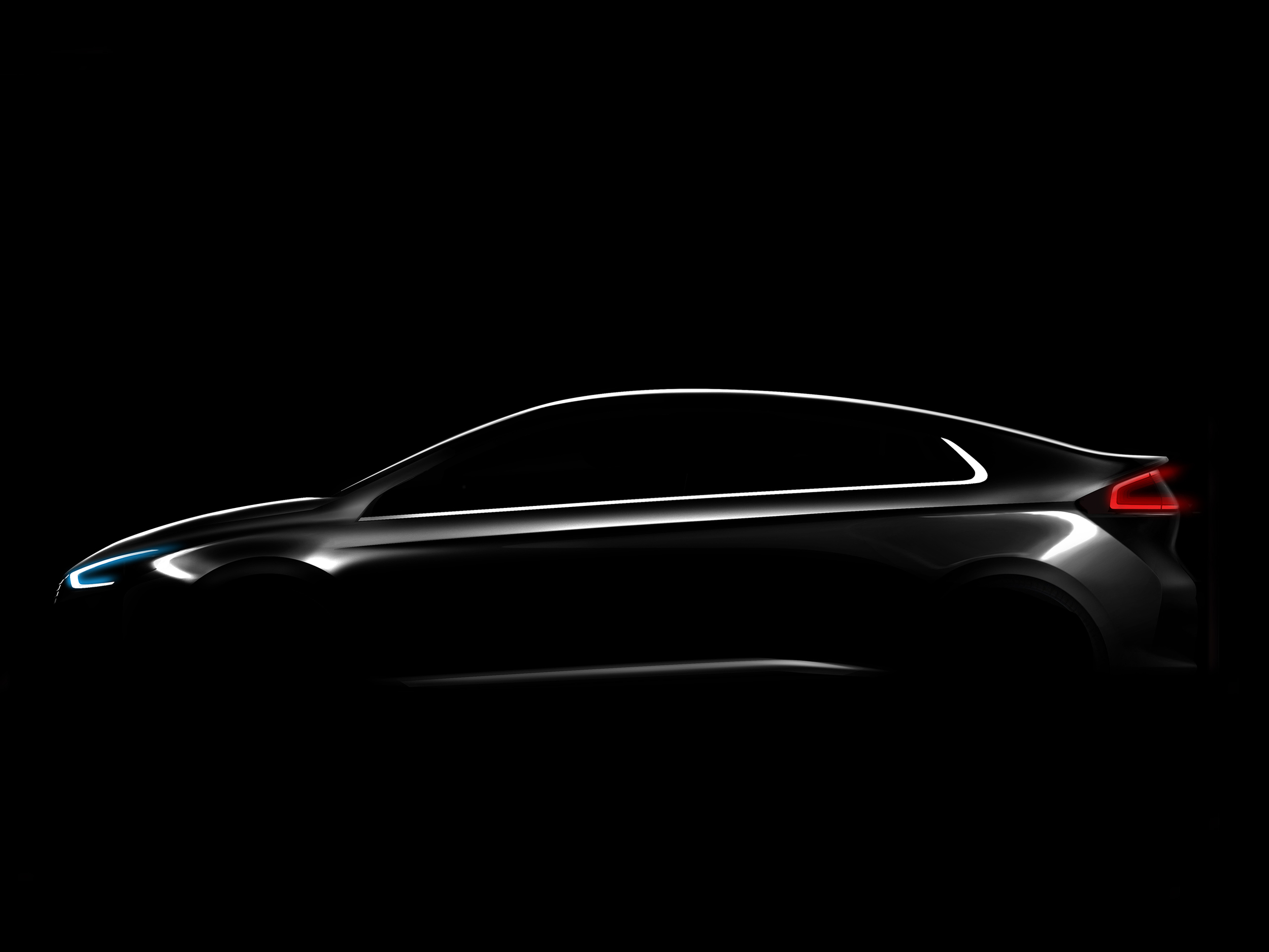
The car will be available with electric, plug-in petrol/electric hybrid, or petrol/electric hybrid powertrain - the first car from any manufacturer to offer these three powertrain options in a single body type. The IONIQ will combine 'class-leading fuel efficiency with a fun, responsive drive and attractive design, a unique mix not yet achieved by a hybrid vehicle' says Hyundai.
The new car's name references elements of its creation (with 'ion' representing an electrically-charged atom) and is based on an 'exclusive' new platform, made specifically for the car's multi-powertrain options. The chassis is optimised to deliver 'responsive handling' while remaining efficient in each of its three powertrain configurations.
In its fully-electric (EV) form, the IONIQ is powered by a high capacity, ultra-efficient lithium ion battery. The plug-in hybrid (PHEV) version combines a fuel-efficient energy with battery power obtained by charging the car with electricity, boosting its range while cutting its emissions. Finally, the hybrid (HEV) utilises the petrol engine and motion of the car to charge the on-board battery, which returns enhanced efficiency by supplementing the engine's power.
Woong-Chul Yang, Head of Hyundai Motor R&D Center said, "Hyundai Motor has a heritage of building innovative, fuel-efficient vehicles, so we are proud to advance our eco-friendly car line-up with the introduction of IONIQ. Our vision for future mobility focuses on choice, with a variety of powertrain options to suit customers' varied lifestyles, without compromising on design or driving enjoyment. IONIQ embodies Hyundai Motor's vision to shift the automotive paradigm and future mobility; IONIQ is the fruit of our efforts to become the leader in the global green car market."
Following its world premiere in Korea in January, the IONIQ is due to be shown at the Geneva Motor Show, followed by the New York Auto Show, both in March 2016.
Concept Car, Electric, Vintage Car, Sports Car, News


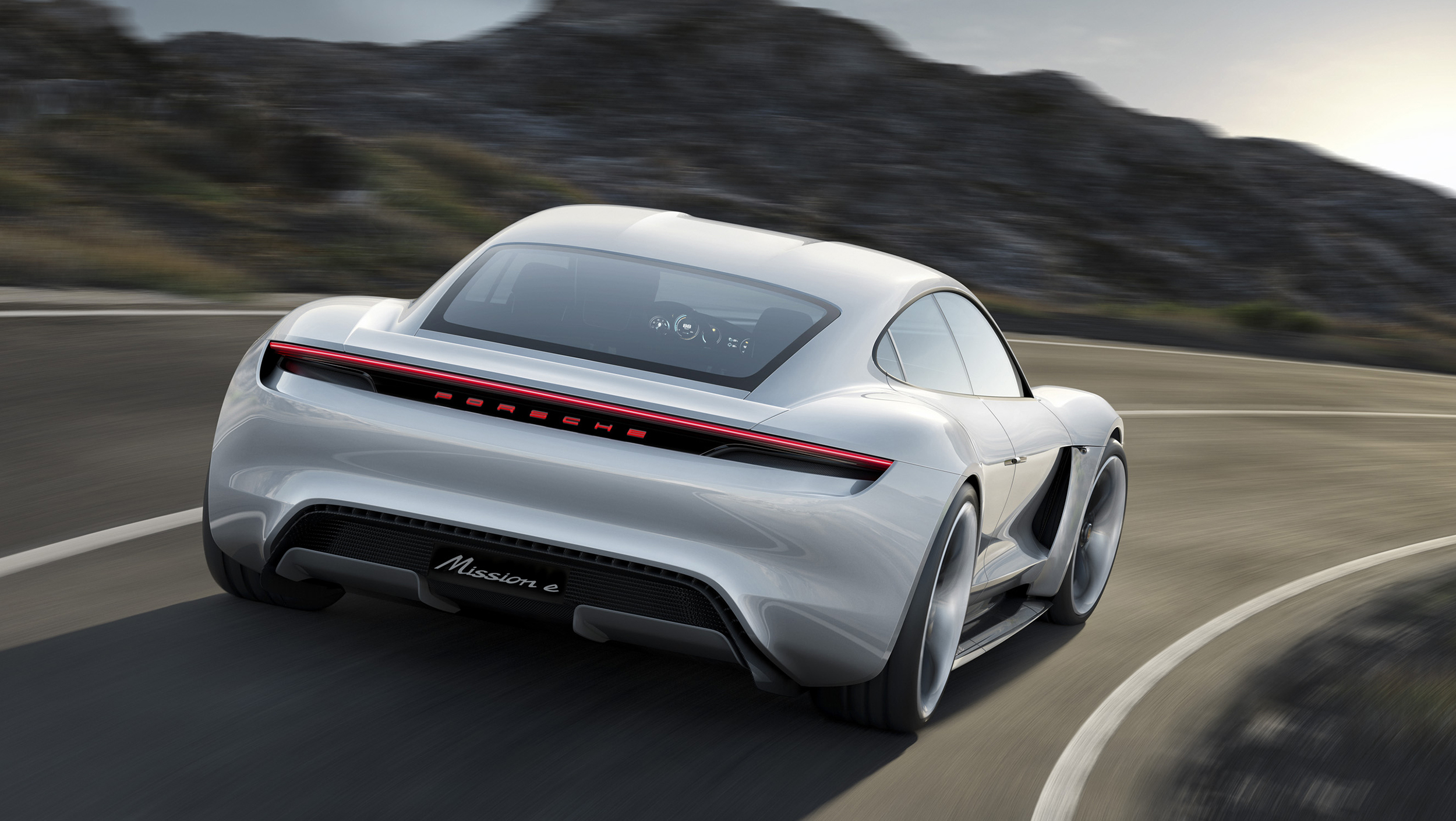
Confirming the Mission E project, Dr. Oliver Blume, Chairman of the Executive Board, at Porsche described the news as: "beginning a new chapter in the history of the sports car."
The Mission E concept car debuted at the Frankfurt Motor Show in September. The electric sports car combines 'outstanding driving performance' with day-to-day practicality. The four-door car with four individual seats has a system power output of over 600 hp (440 kW) and will accelerate to 62mph in under 3.5 seconds while offering a range of more than 310 miles. Charged via an 800-volt charger unit specially developed for the car, the lithium-ion batteries integrated within the vehicle floor have enough power again for 80 percent of the range after just 15 minutes. The vehicle can optionally be 'refuelled' wirelessly by induction via a coil set into the garage floor.
With the Mission E project, Porsche says it is 'continuing to back sustainable growth' with more than 1,000 new jobs are being created. The company will be investing around 700 million euros in its main site. Over the next few years, a new paint shop and a new assembly plant will be built. The existing engine factory is also being expanded for the production of electric motors. In addition, the existing body shop is being enlarged.
Dr. Wolfgang Porsche, Chairman of the Supervisory Board of Porsche AG: "With Mission E, we are making a clear statement about the future of the brand. Even in a greatly changing motoring world, Porsche will maintain its front-row position with this fascinating sports car."
Dr. Oliver Blume continued: "We are resolutely taking on the challenge of electric mobility. Even with solely battery-powered sports cars, Porsche is remaining true to its philosophy and offering our customers the sportiest and technologically most sophisticated model in this market segment."
The new vehicle is due to be launched at the end of the decade.
Green Lite Taxi Kft., based in Budapest, has purchased 65 Nissan LEAFs in a bid to become Hungary's largest zero emission fleet.
Ors Levay, CEO of Green Lite Taxi Kft., which has installed seven quick chargers within the city to power the franchise, said: "We are delighted to be the first taxi company in Hungary to go 100 percent electric and the 199 km range means we only need to charge our taxis once during a shift. Along with the large savings on fuel and maintenance, the Nissan LEAF is very smooth to drive and almost silent, which means a more enjoyable journey for my customers and the drivers say typical 10 hour shifts are less tiresome."
Nissan delivered over 100 electric vehicles to taxi companies across Europe in 2015, making it the best-selling manufacturer of pure electric taxis.
In Estonia, a LEAF owned by taxi company, Elektritakso, is said to have clocked up over 218,000 kilometres (135,459 miles) on its original battery pack, showcasing its durability and reliability.
In total, there are 80 electric taxis in Estonia, whilst in Lithuania, Nissan is set to deliver its first eight electric taxis to the Smart Taxi Company, based in the country's capital, Vilnius, for late 2015.
Nissan electric vehicles - which include the LEAF and the e-NV200, a passenger and light commercial vehicle - are becoming increasingly popular among European taxi businesses, with the Netherlands and the UK topping Nissan's e-taxi league table.
The newly launched 30 kWh LEAF is expected to be popular with taxi firms as it will enable drivers to travel 25 percent further than the standard vehicle.
Gareth Dunsmore, Director of Electric Vehicles for Nissan Europe, said: "We are so proud to be announcing this all-important milestone. Nissan has already delivered 30 percent more e-taxis this year than in 2014 and this figure is constantly increasing, as more taxi companies realise the benefits of becoming 100 percent electric."